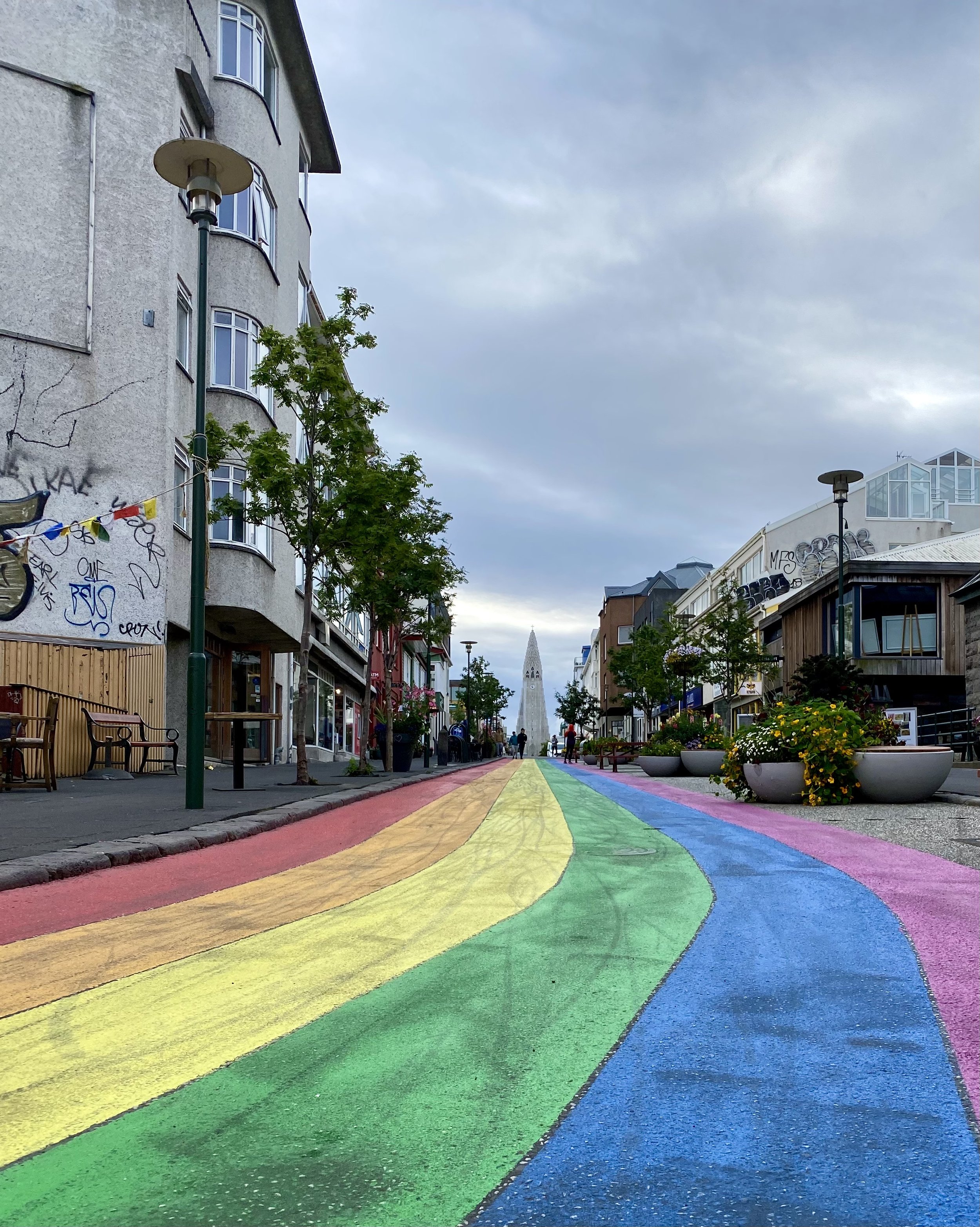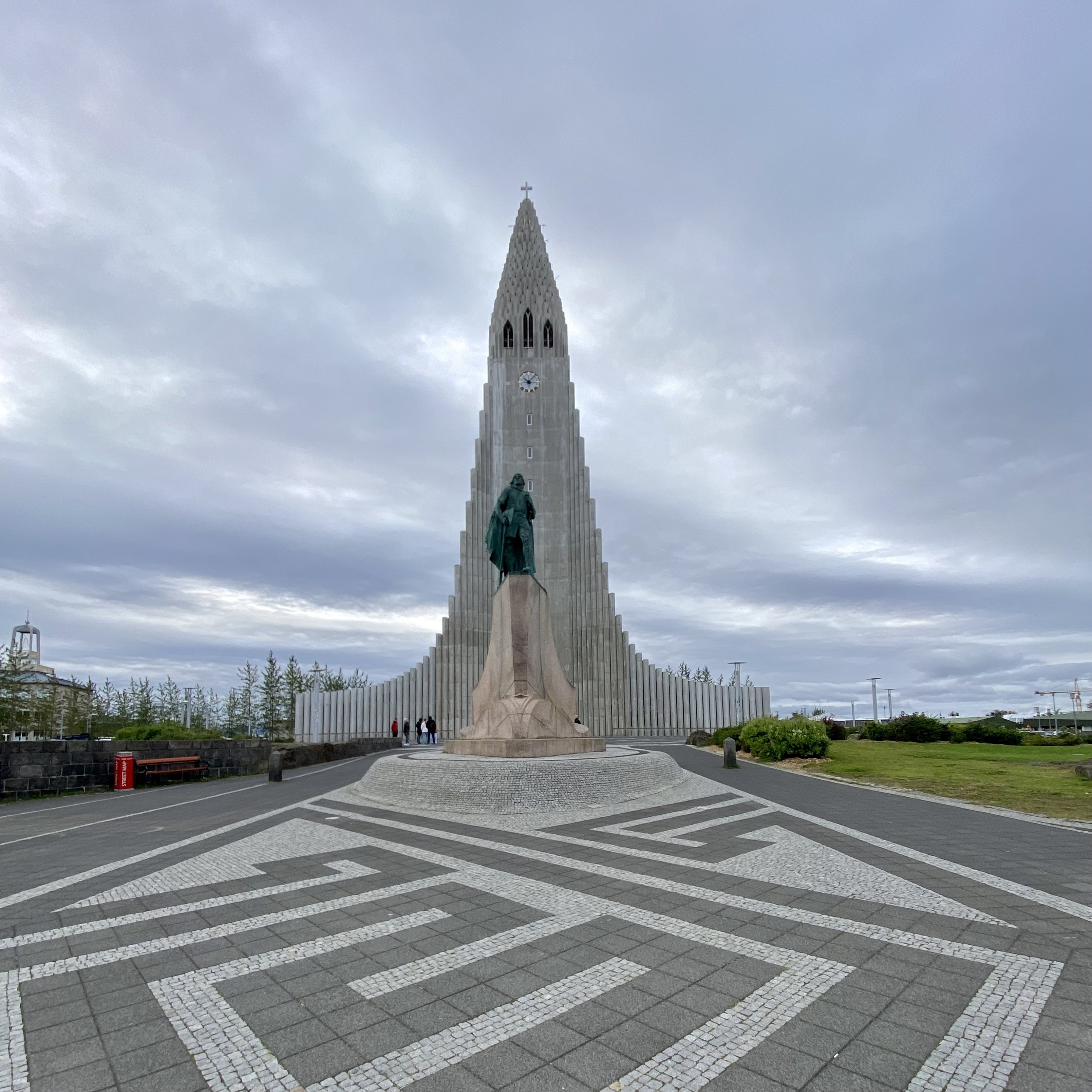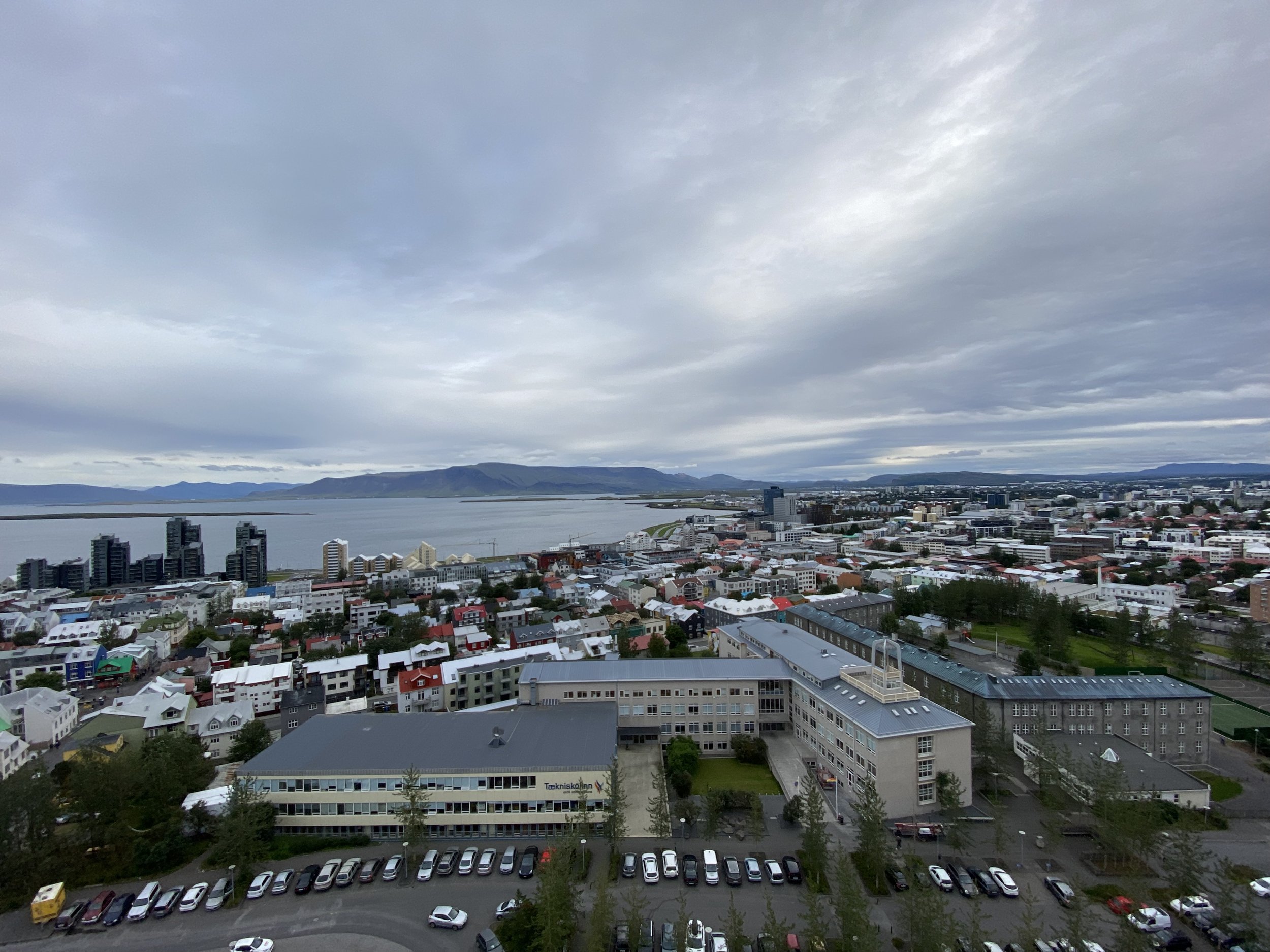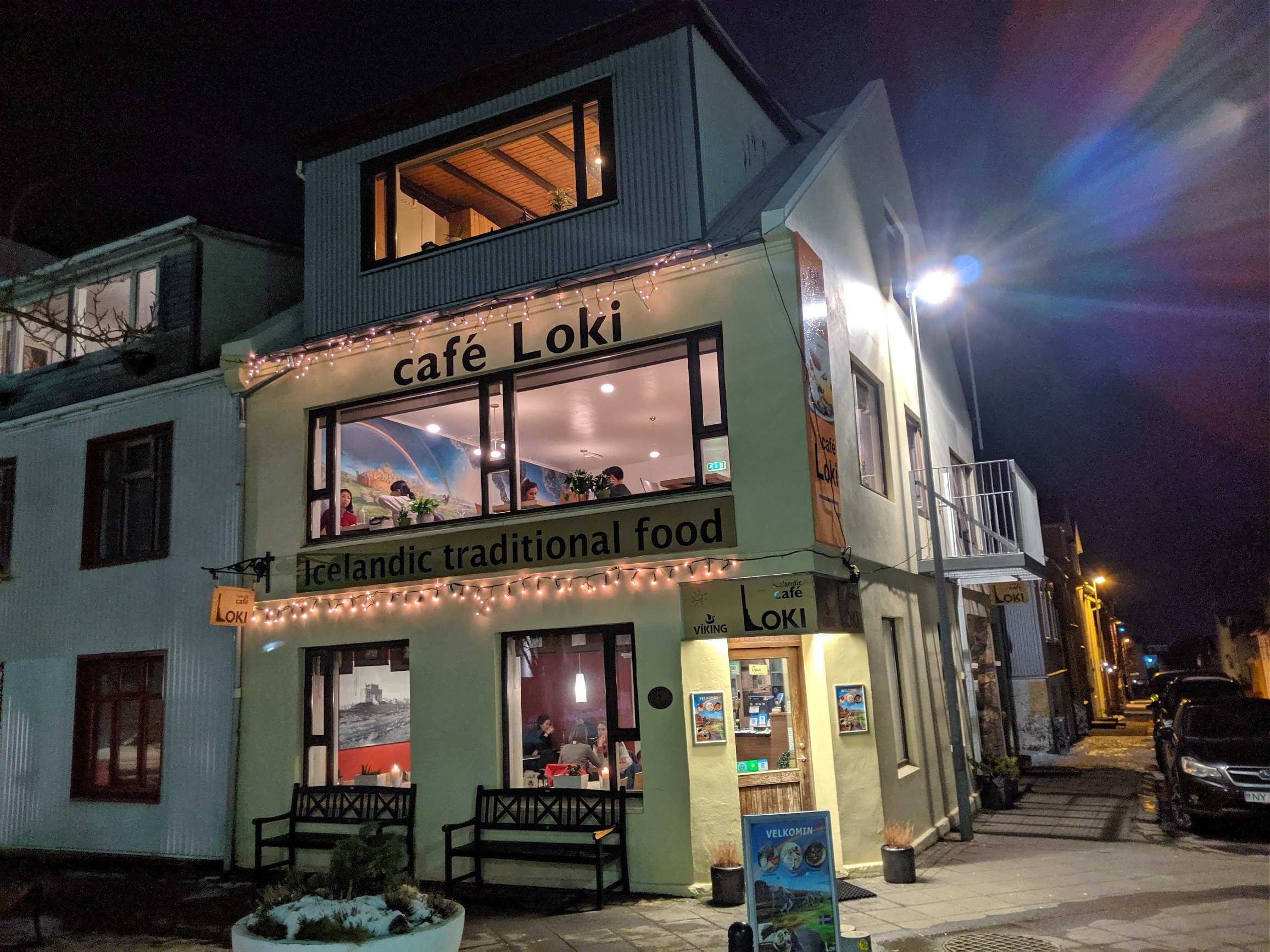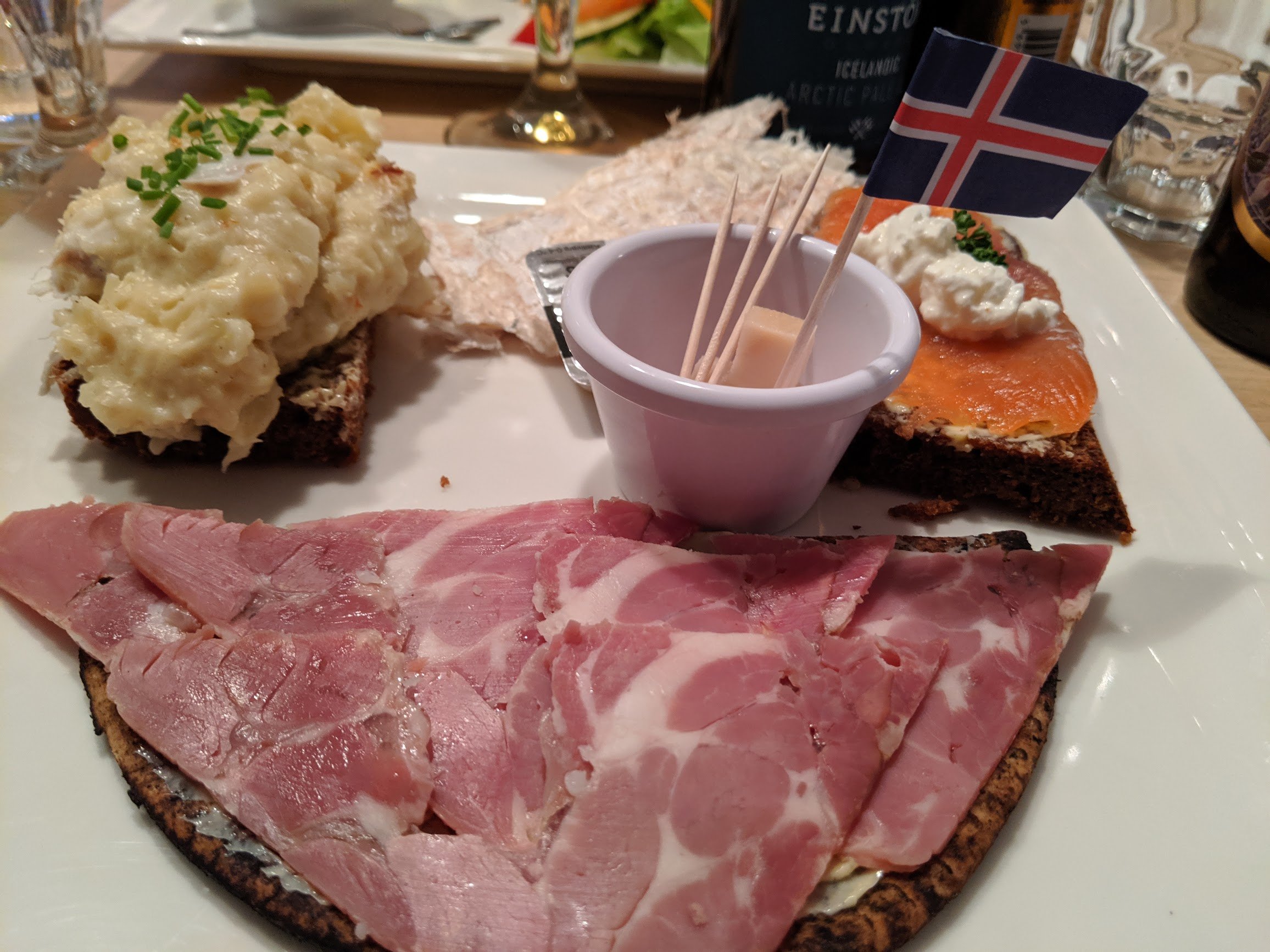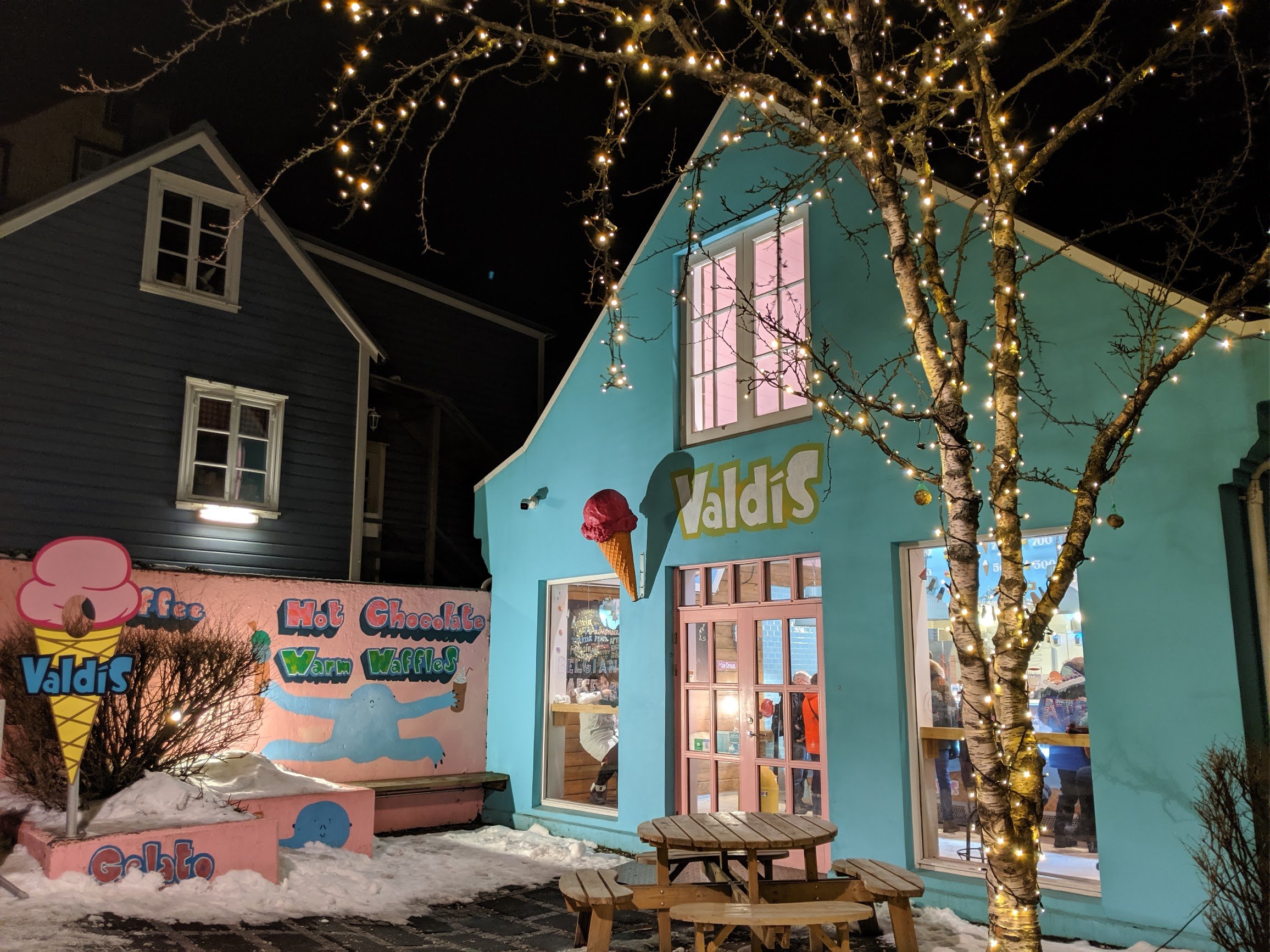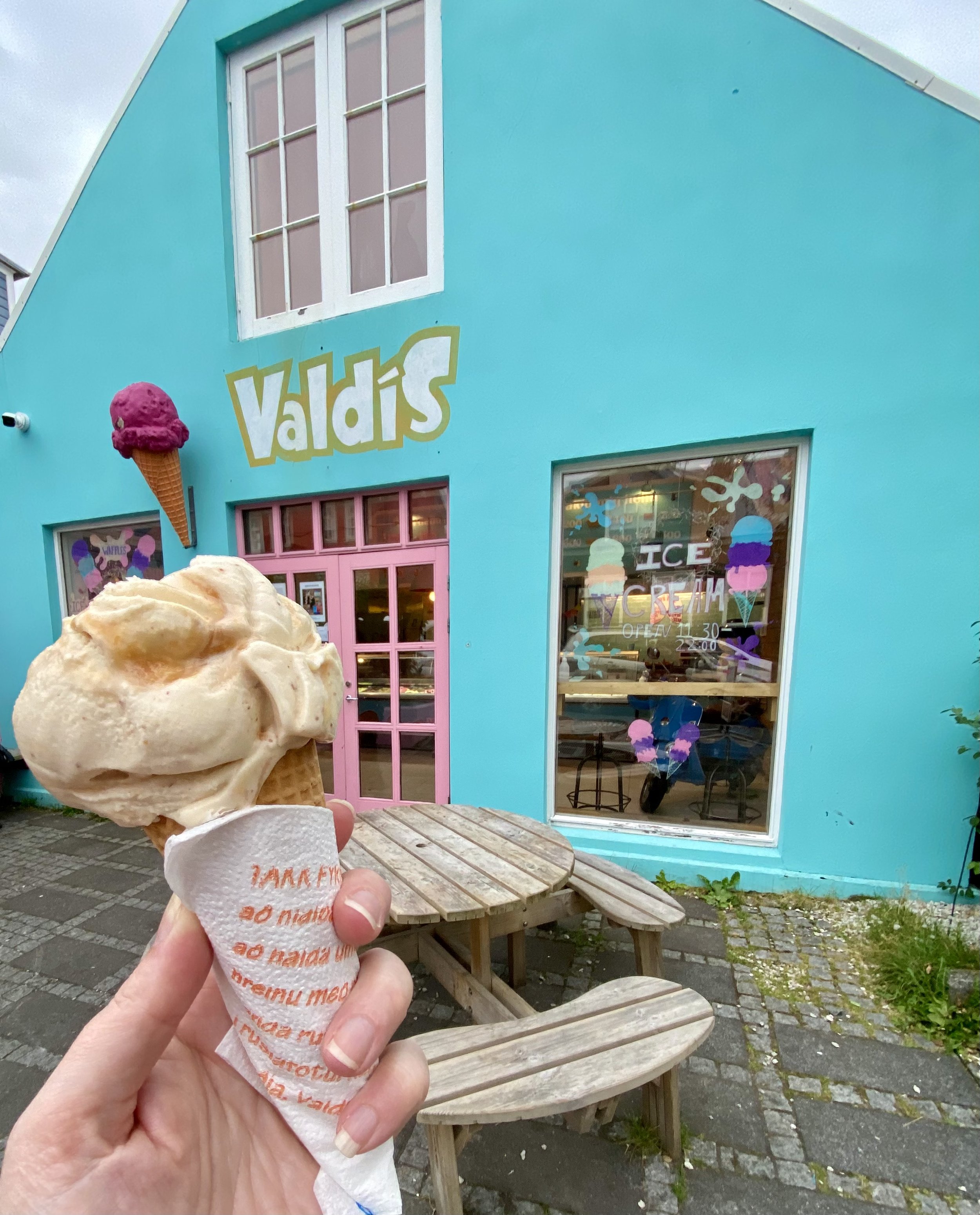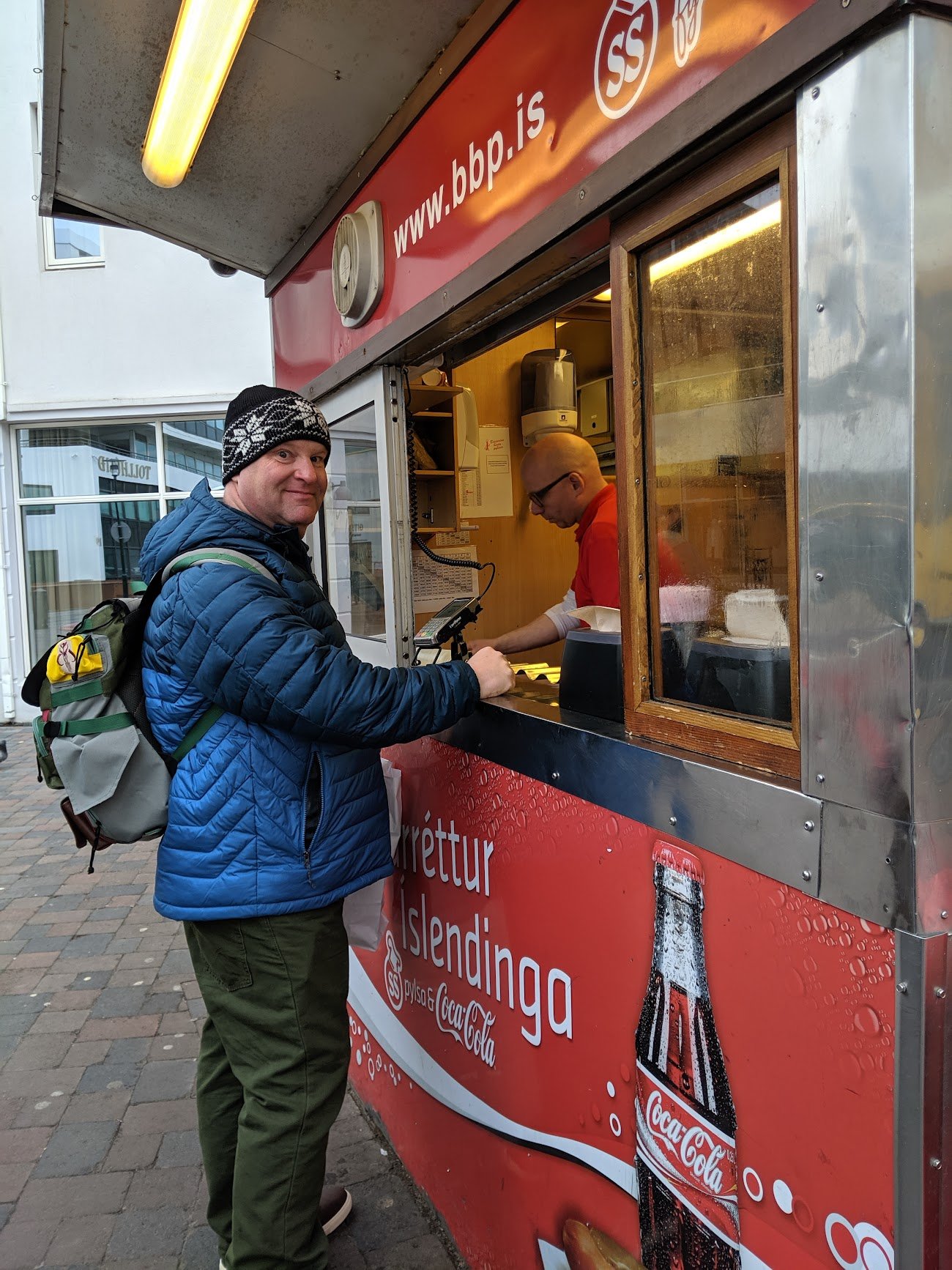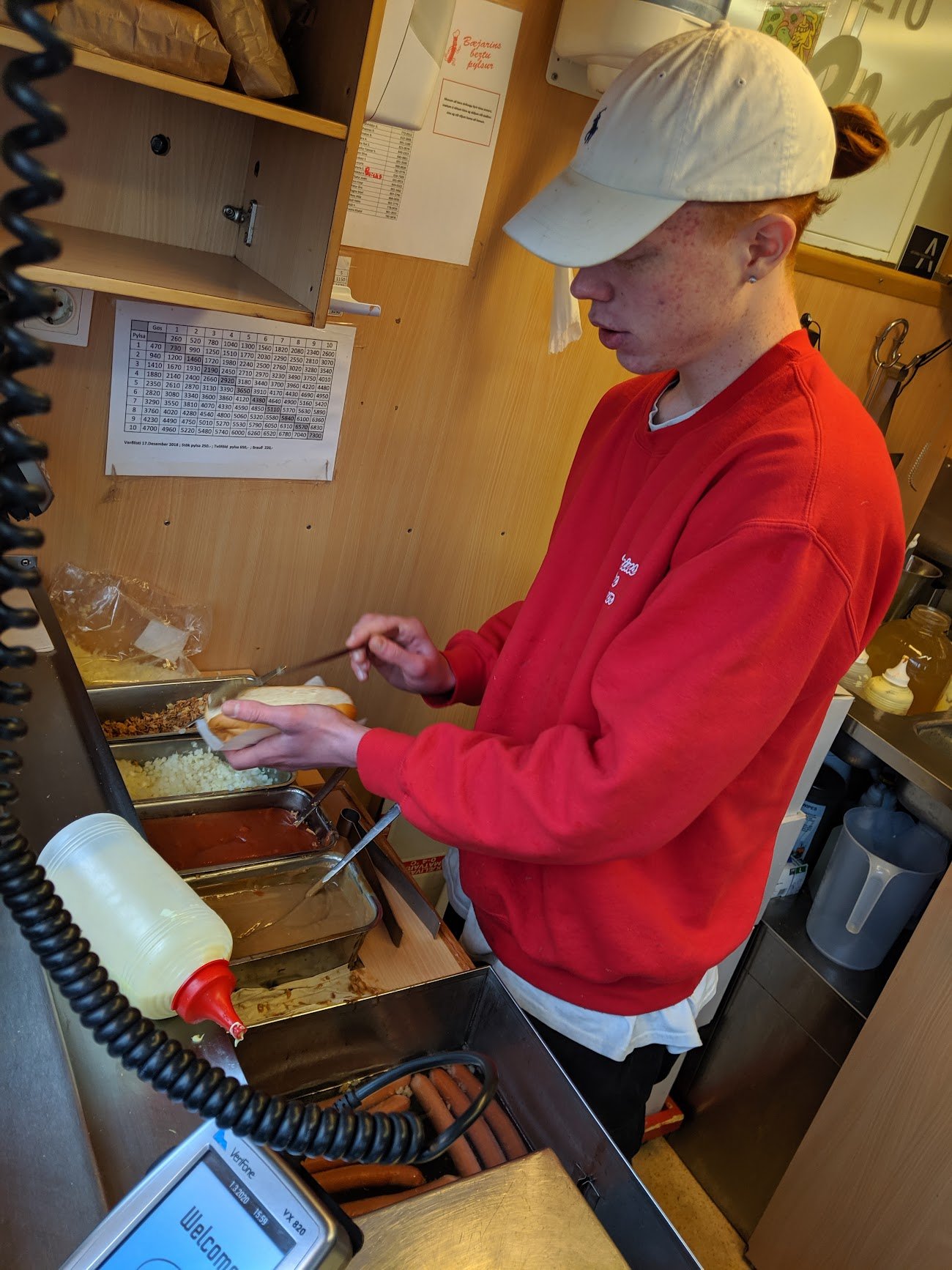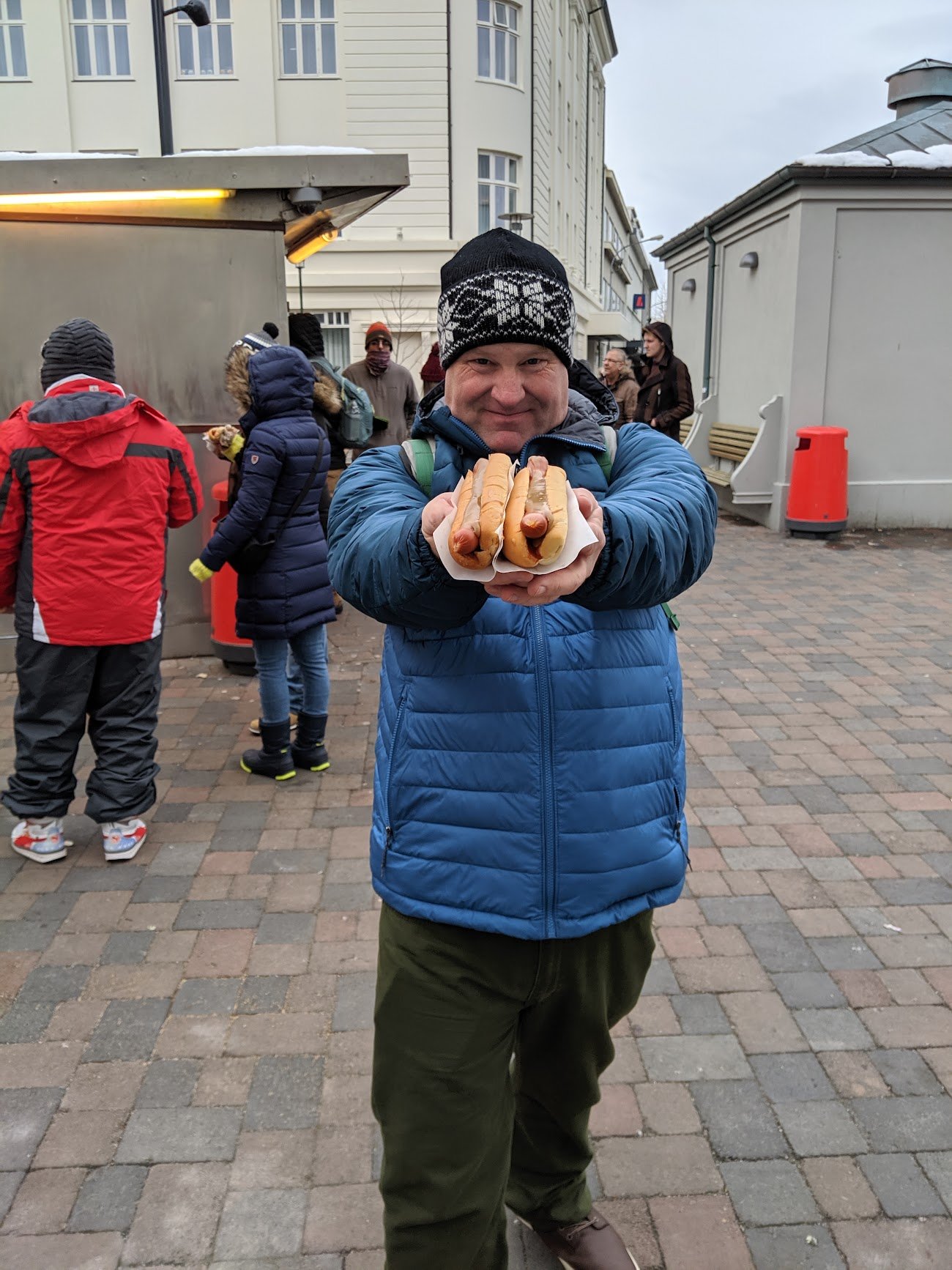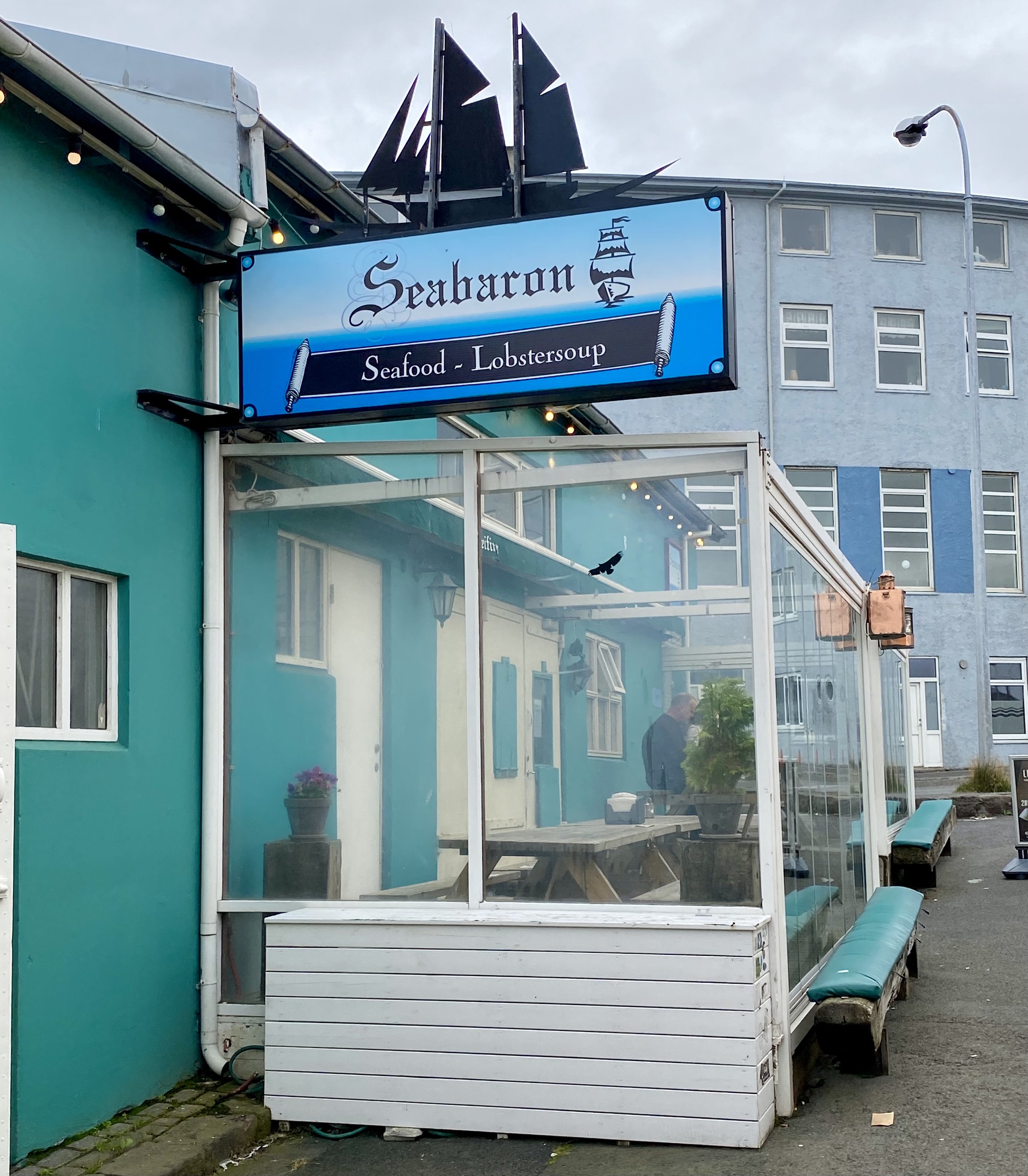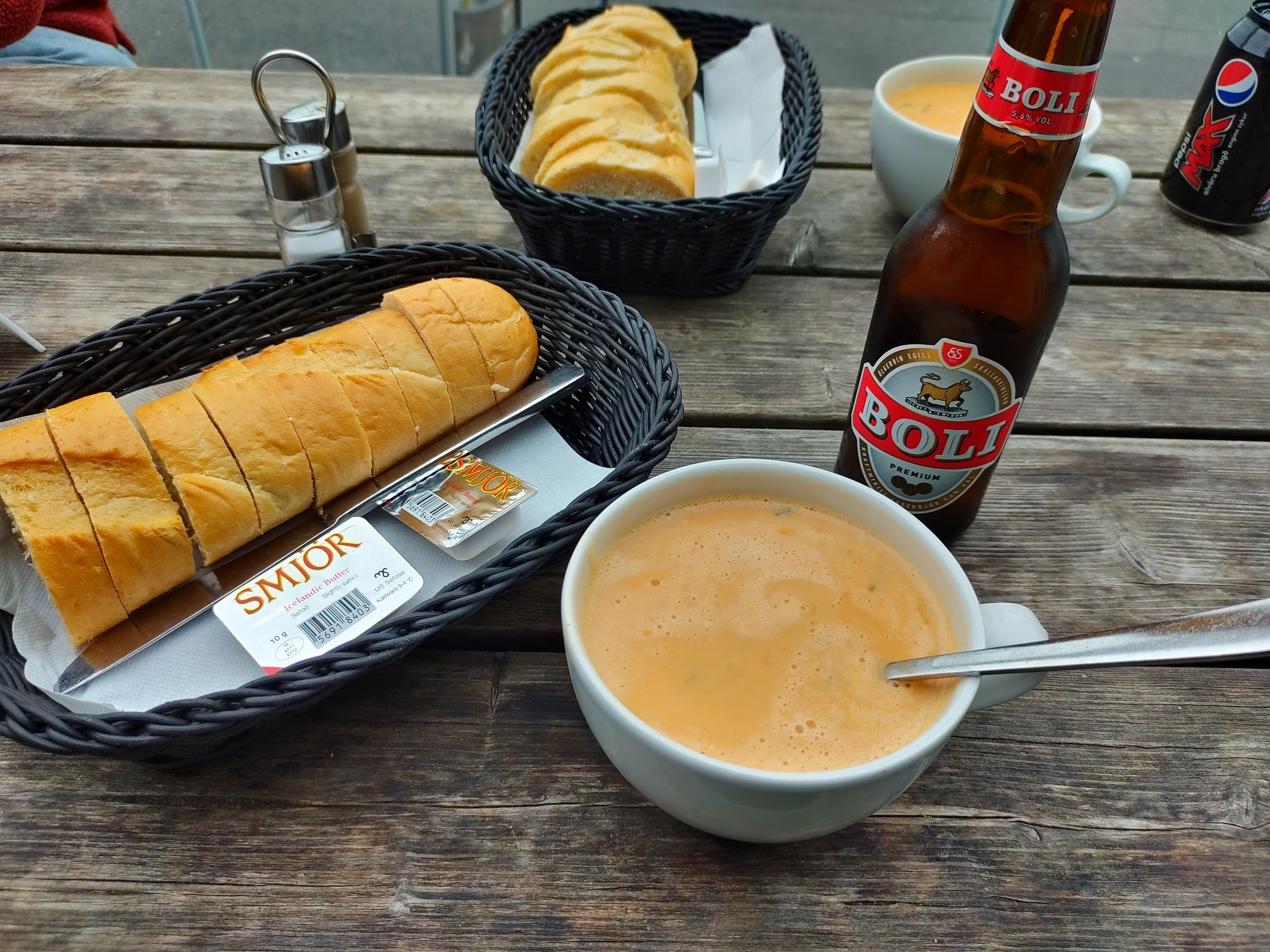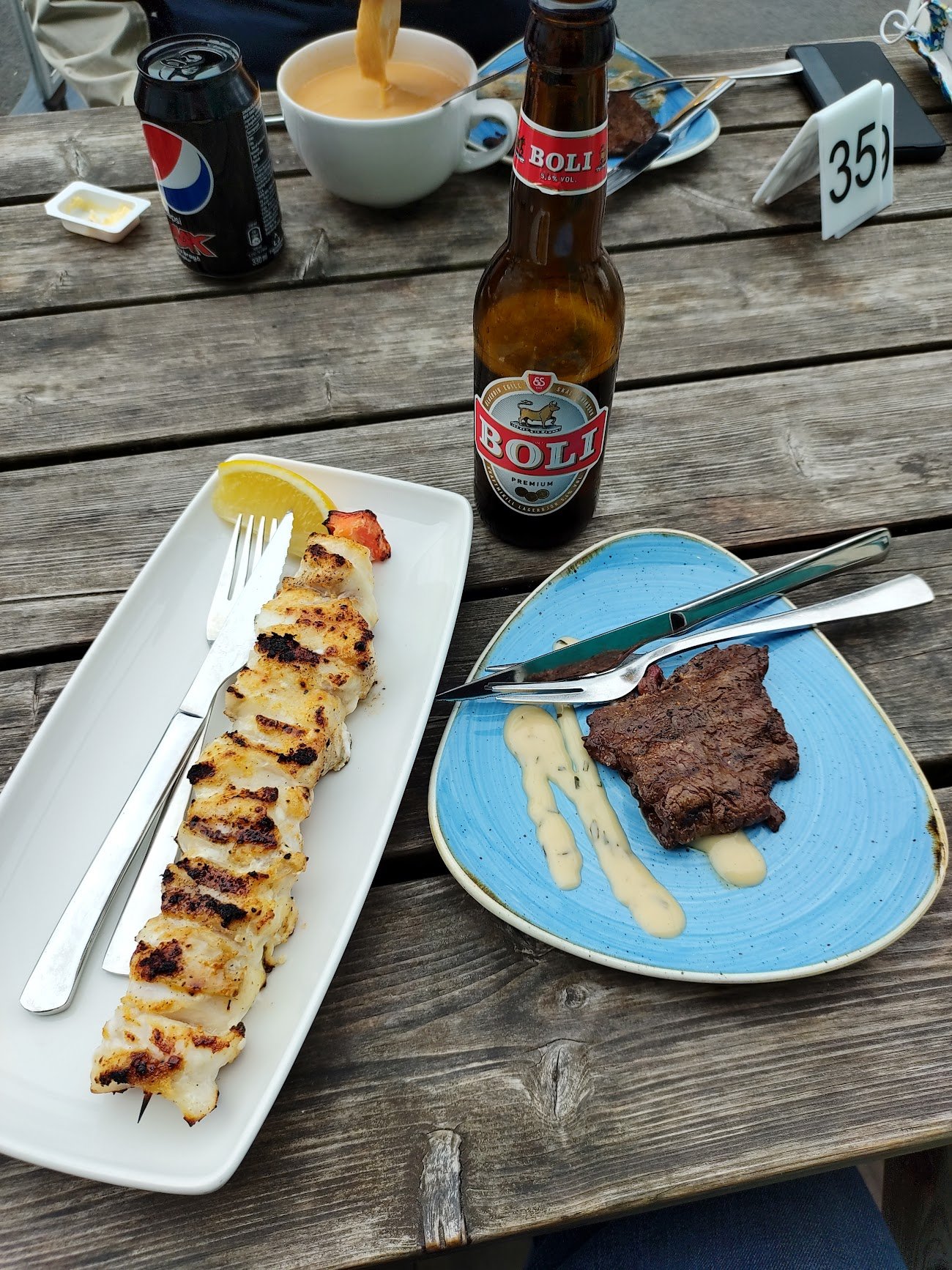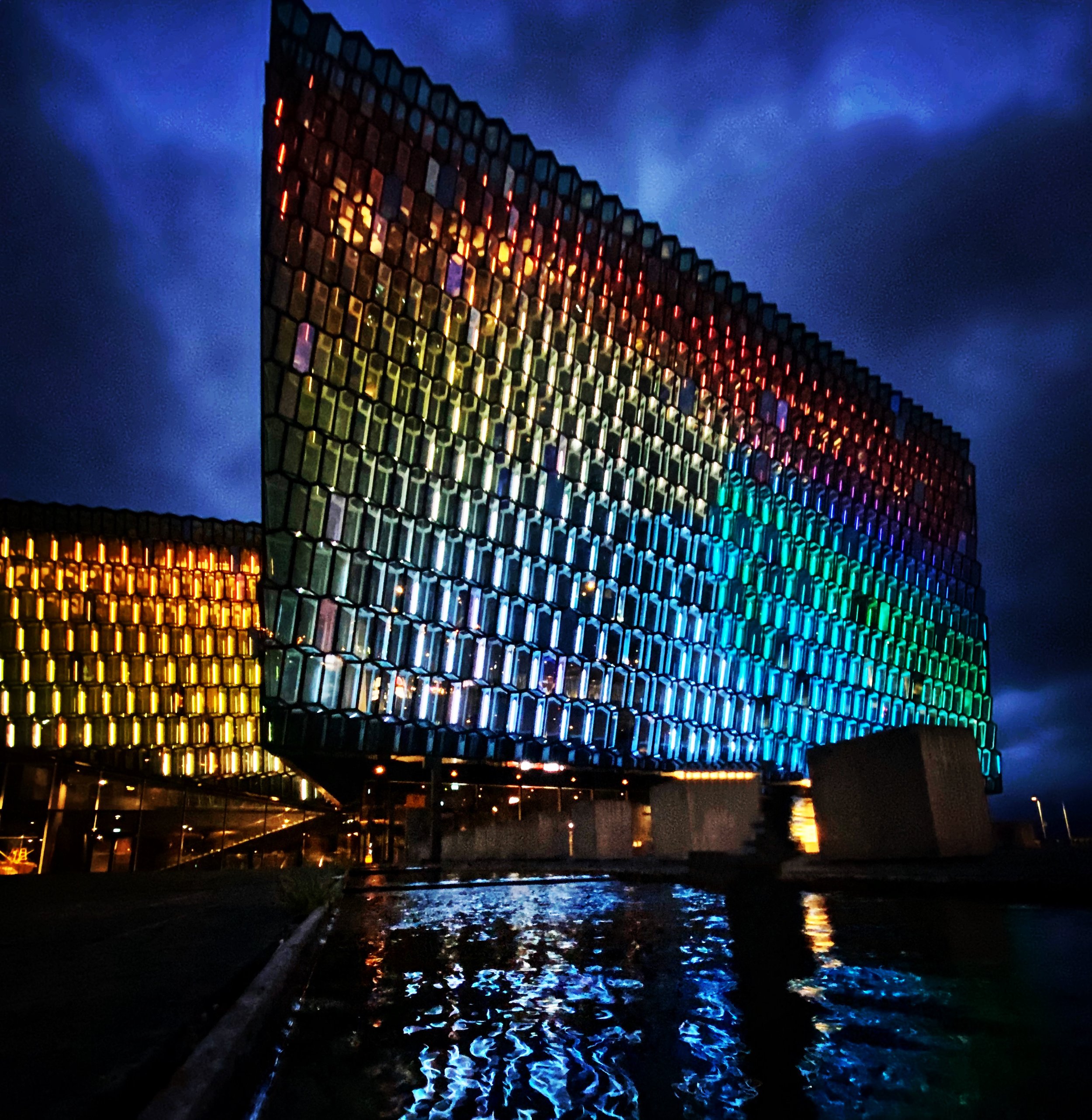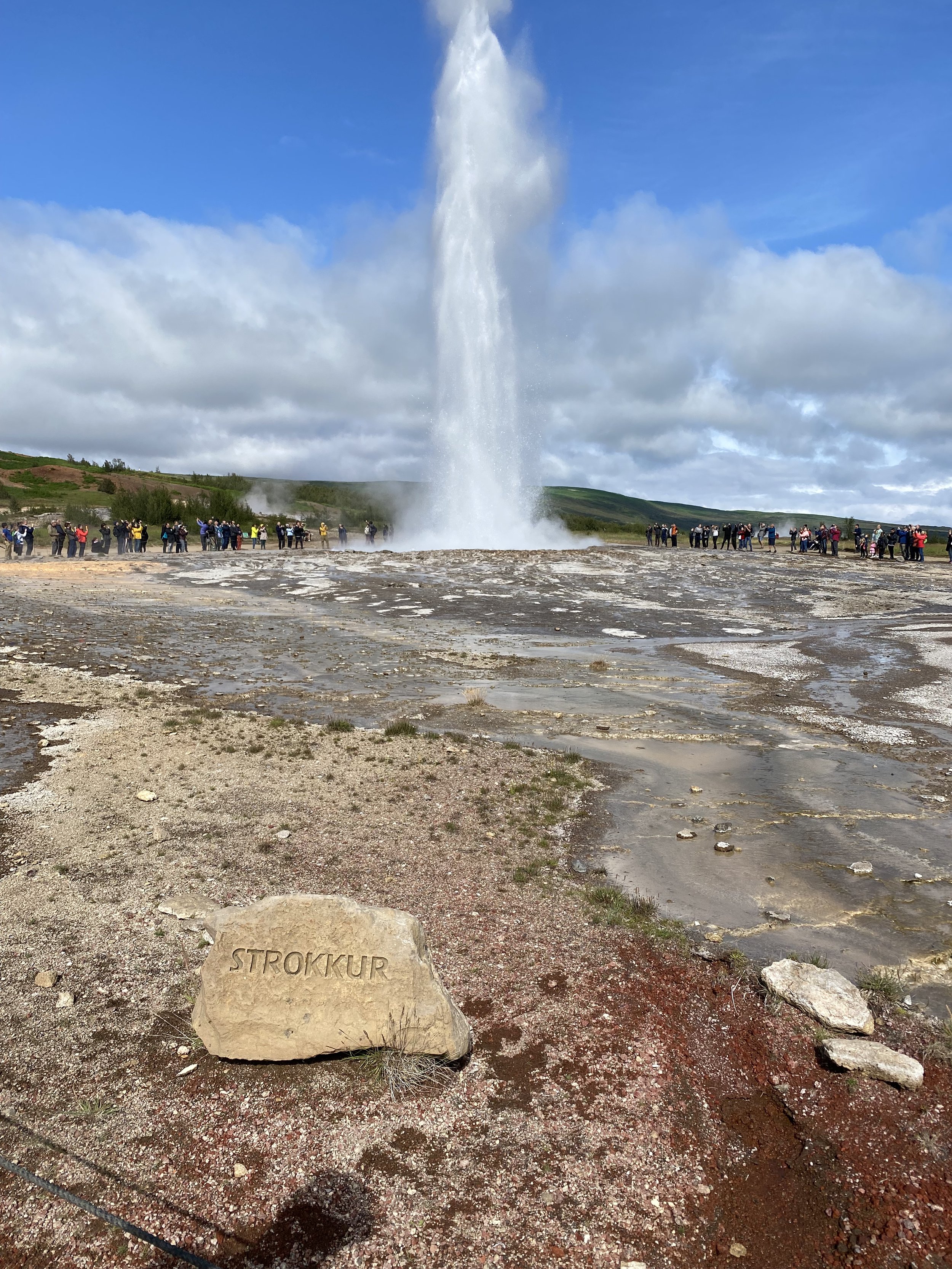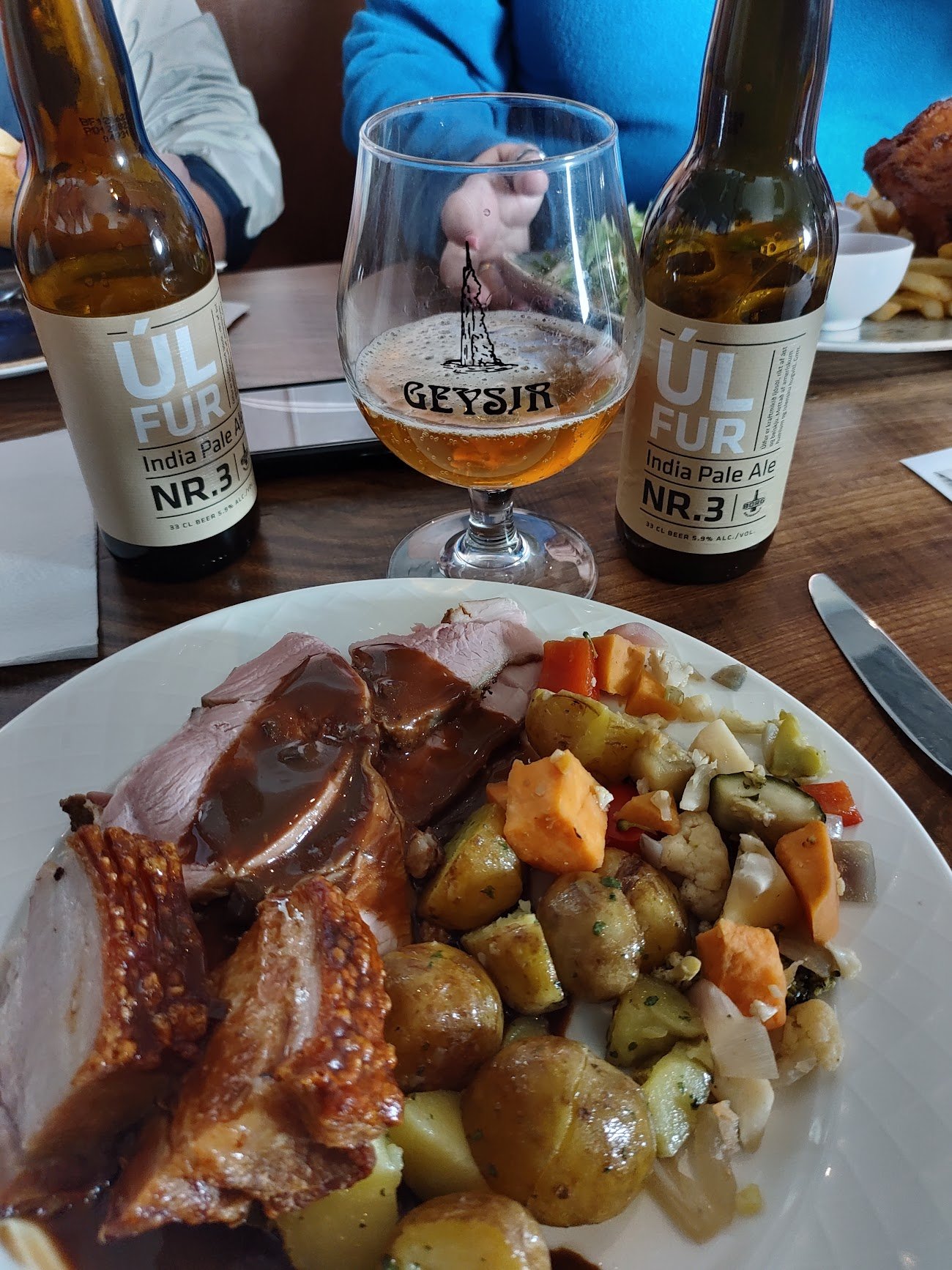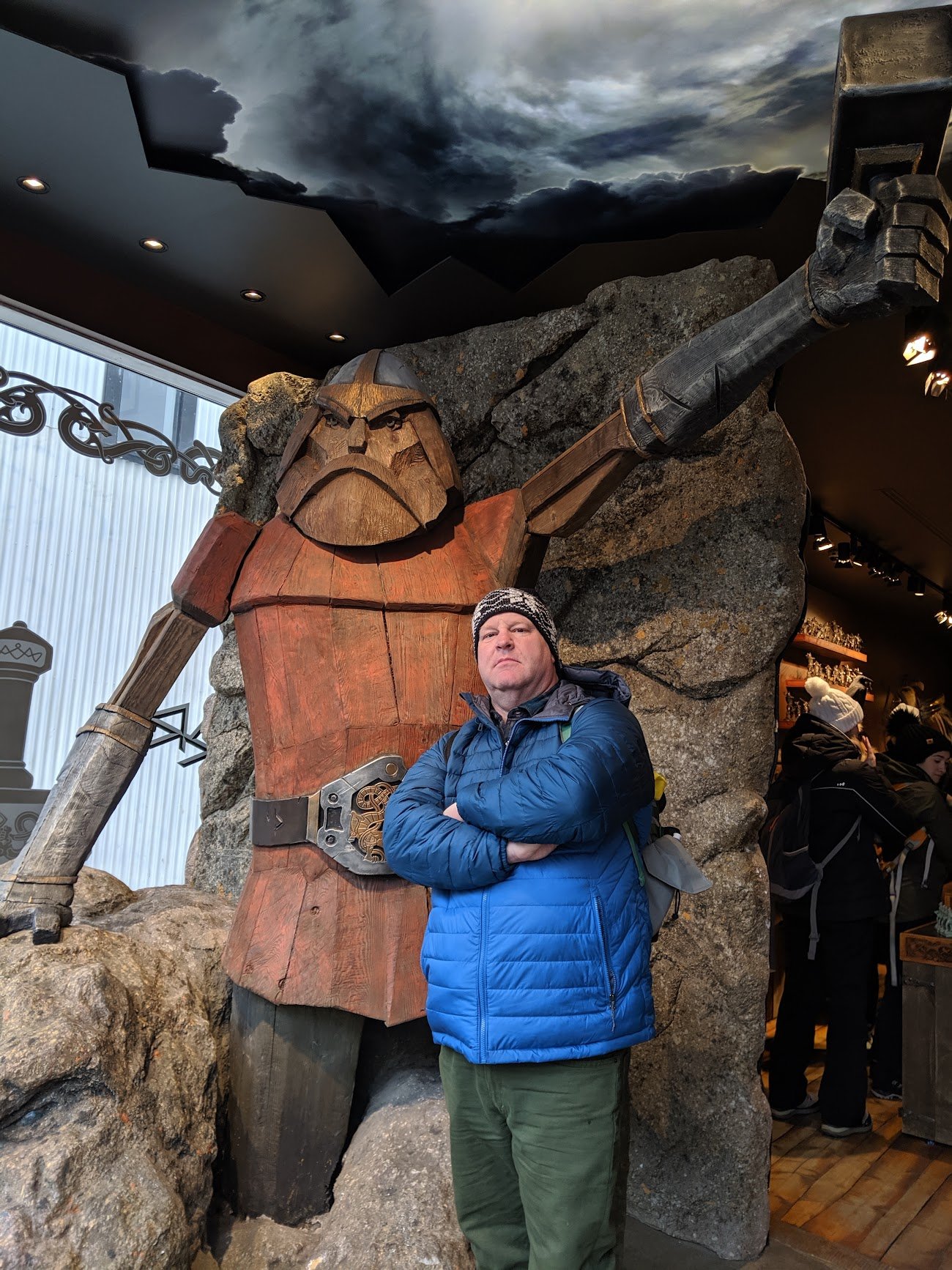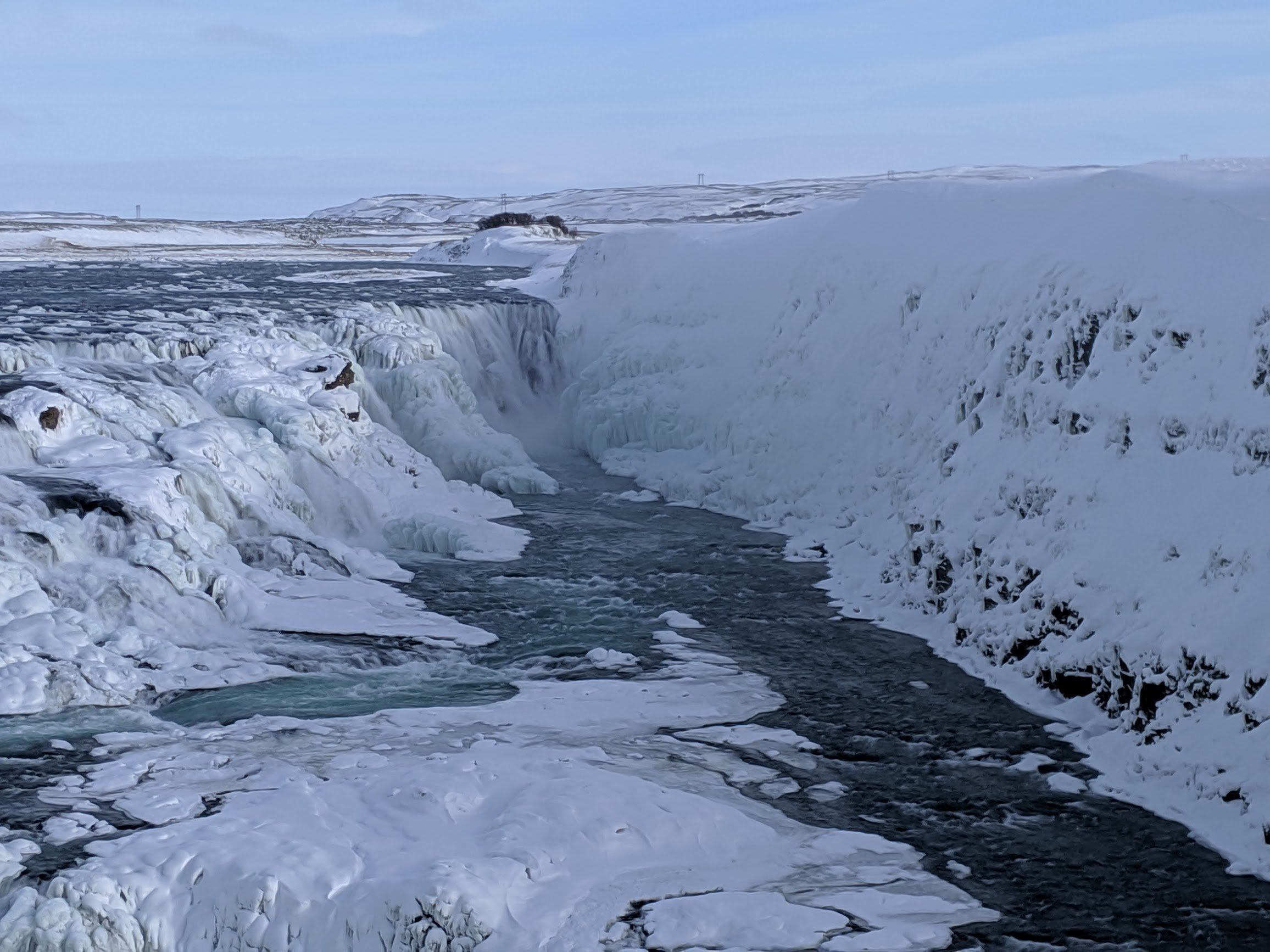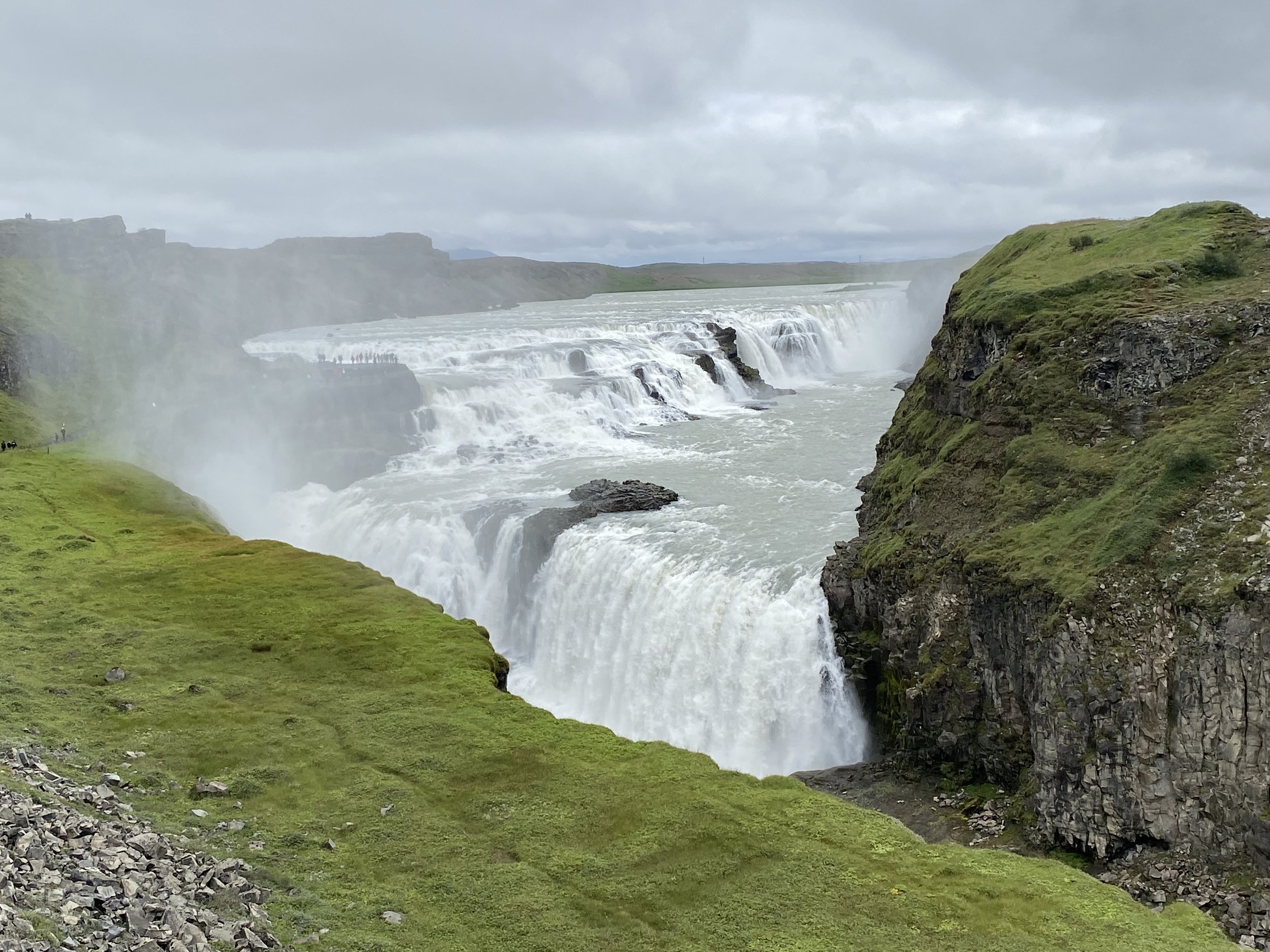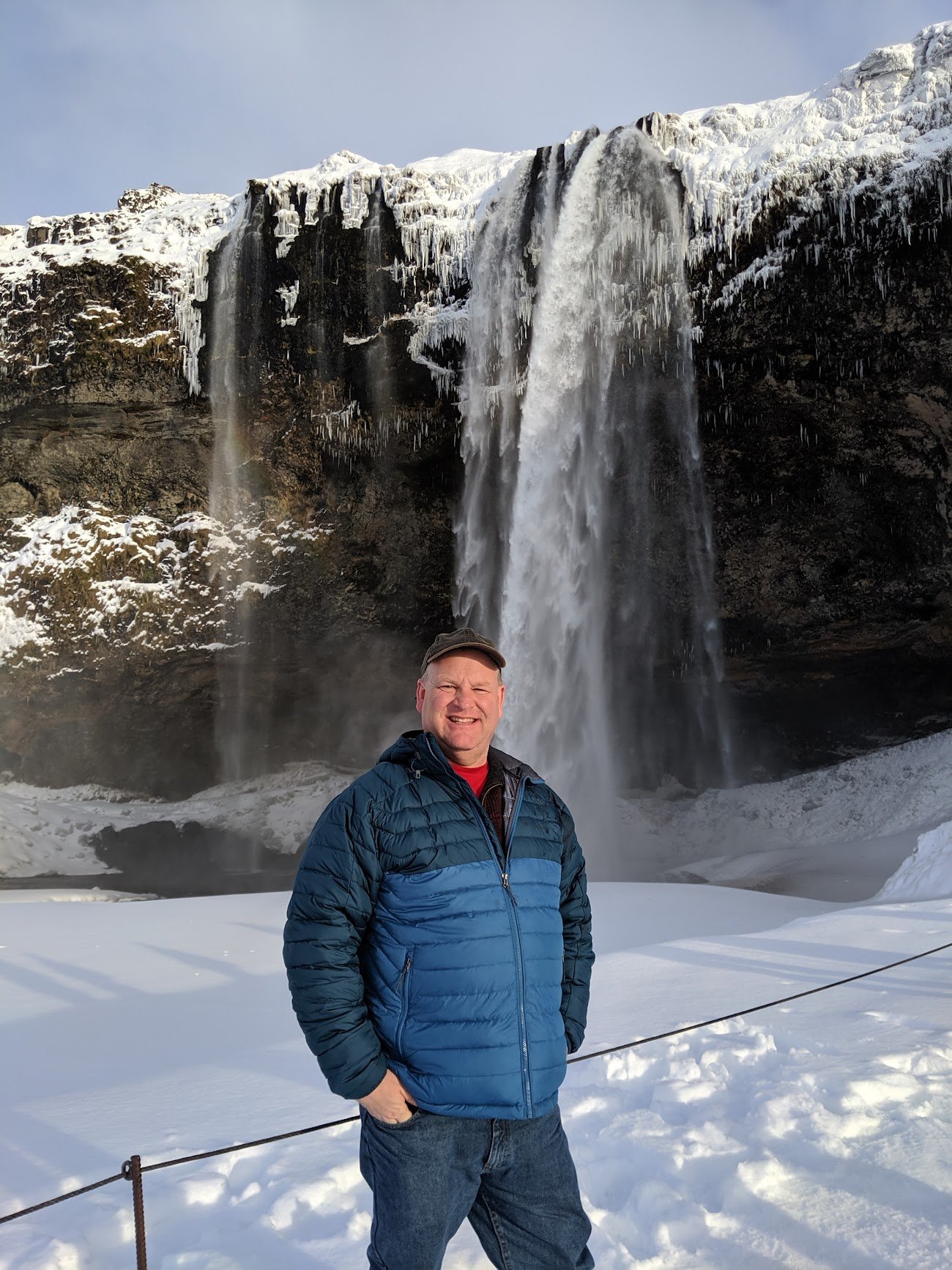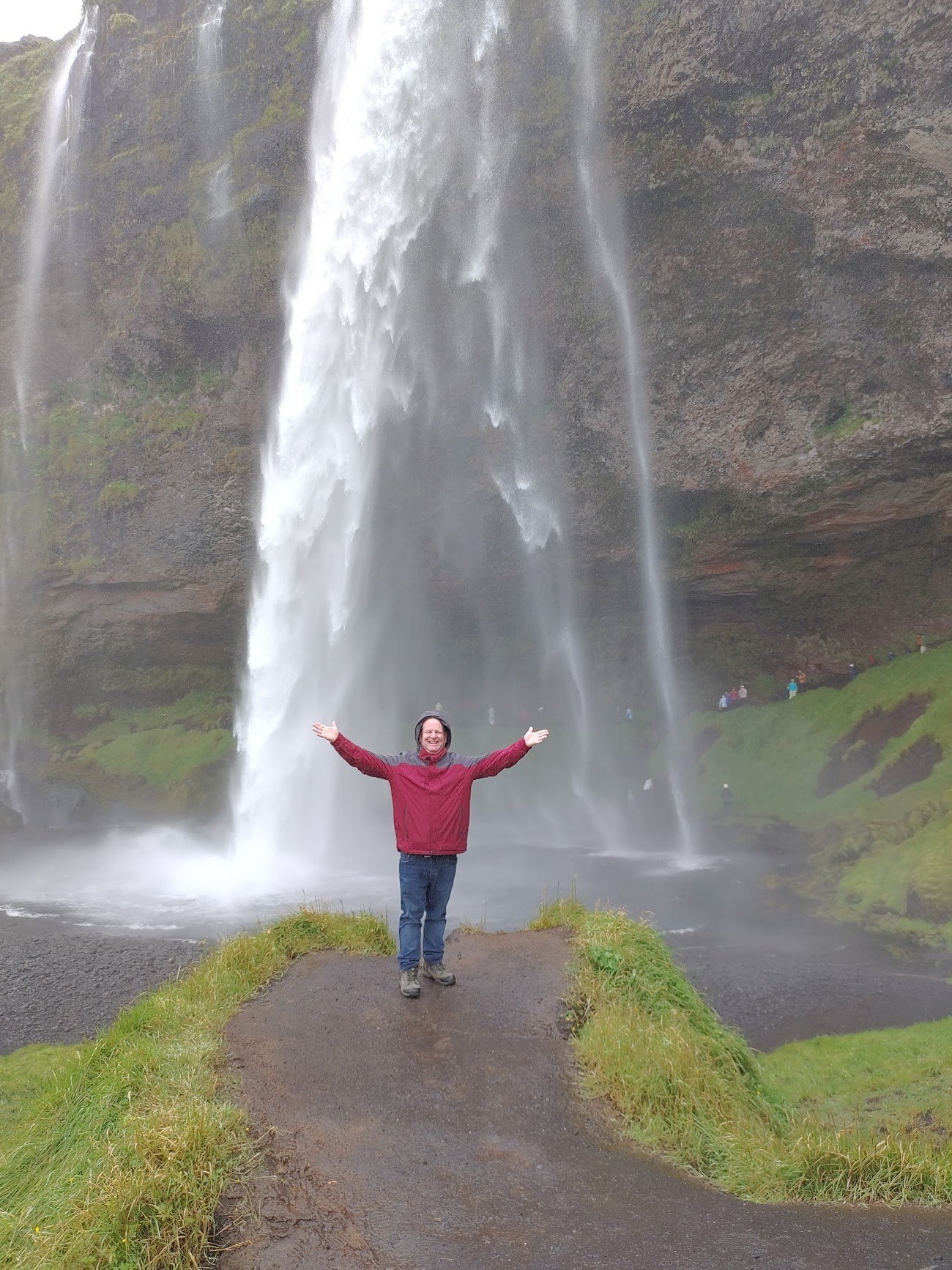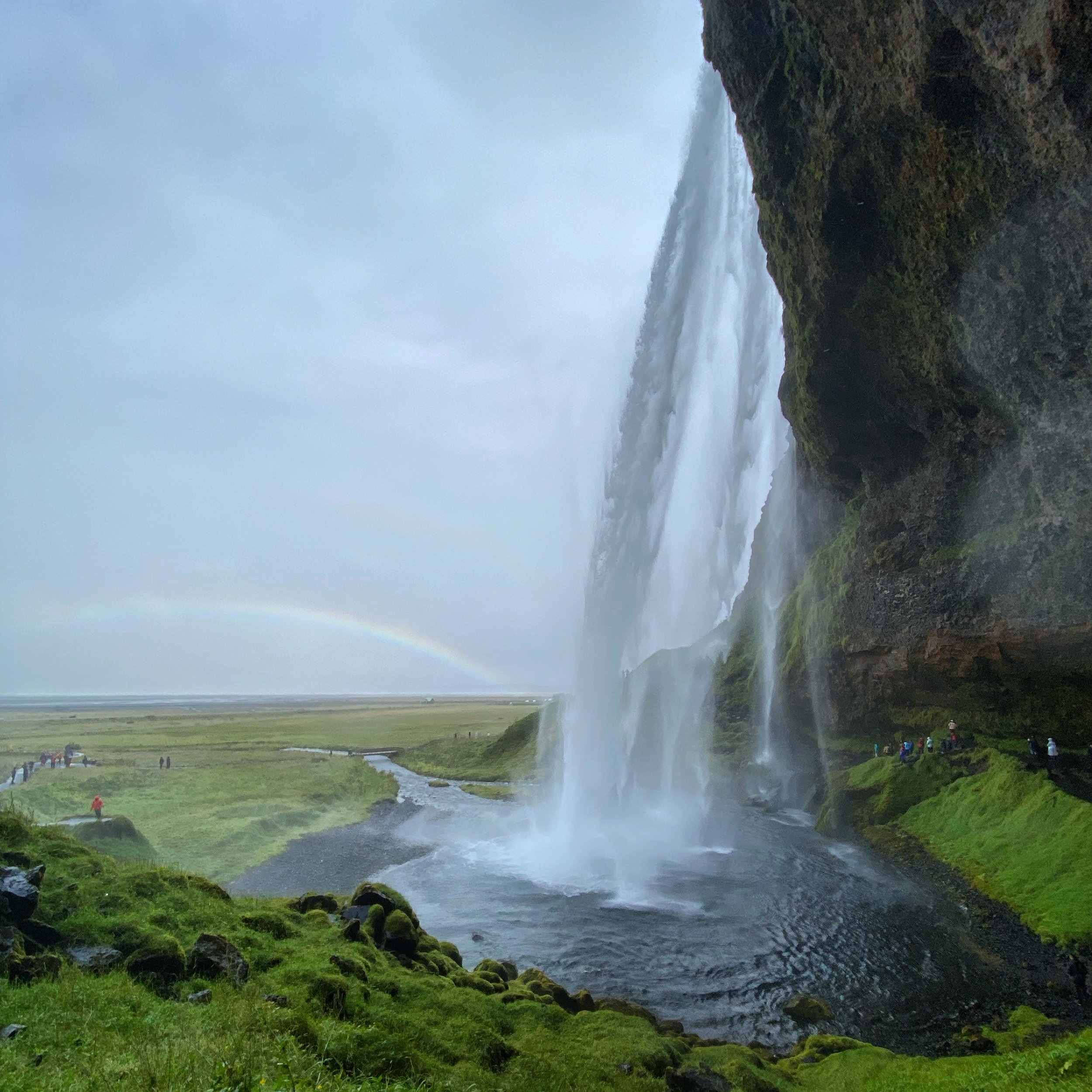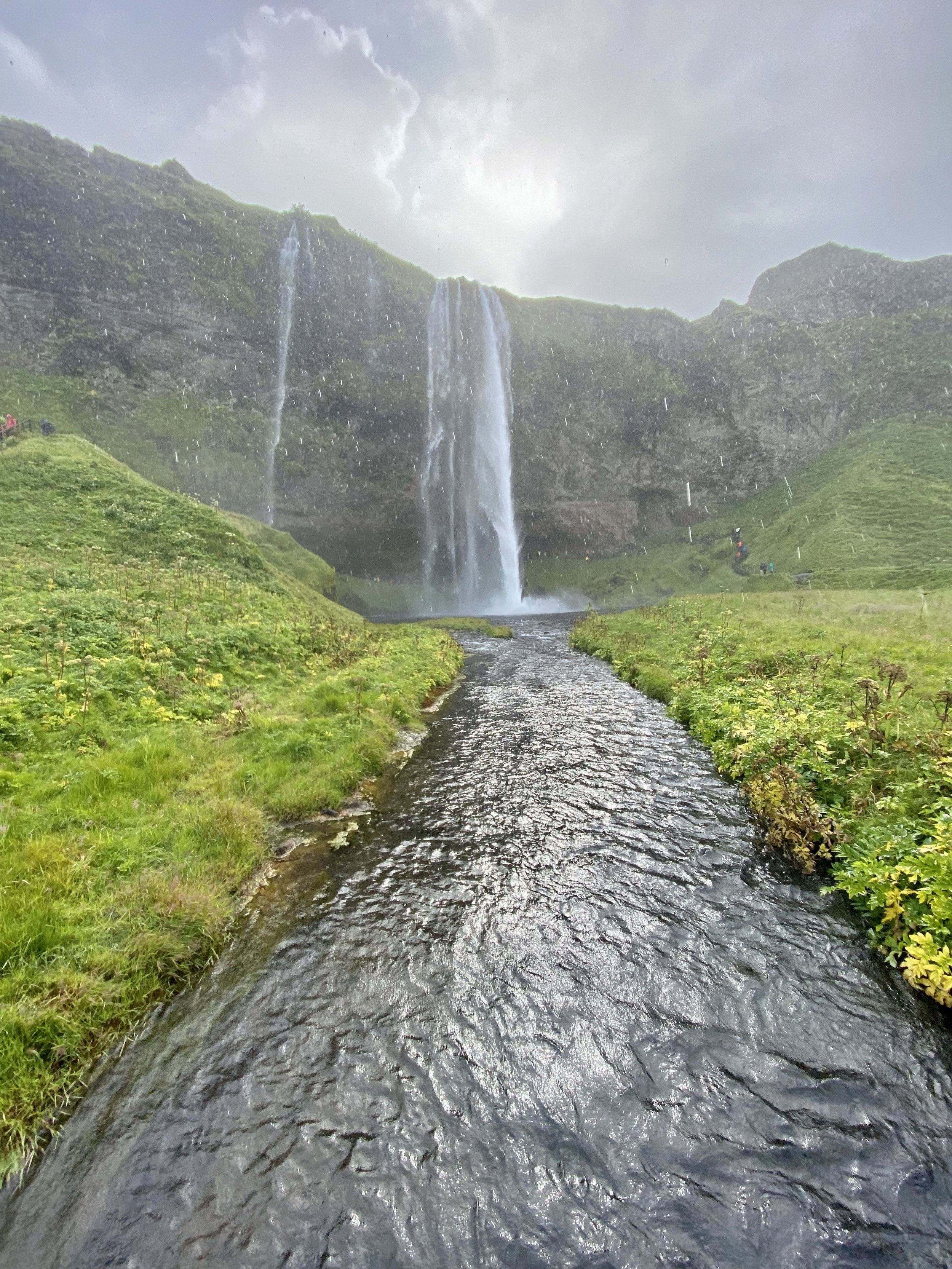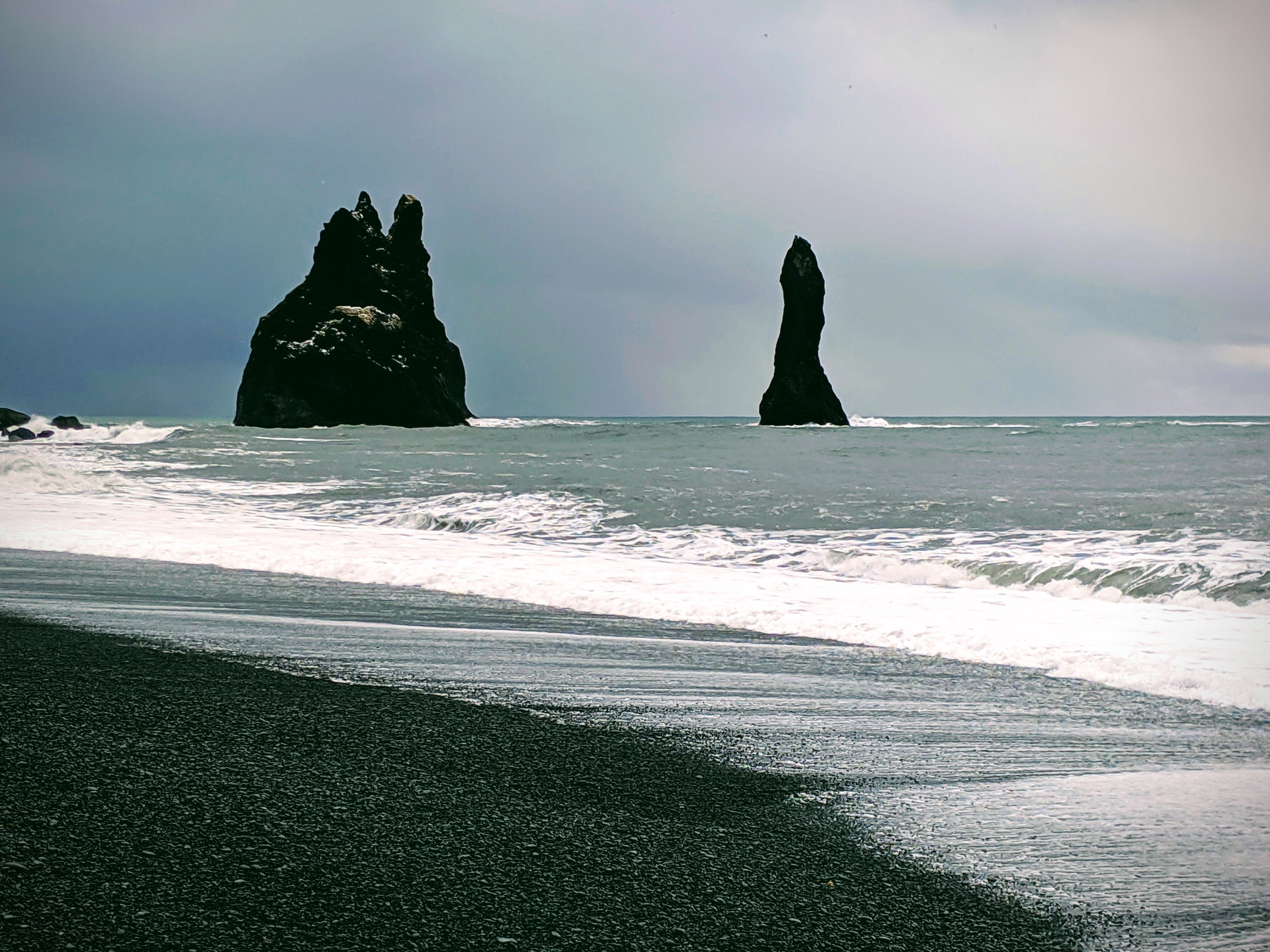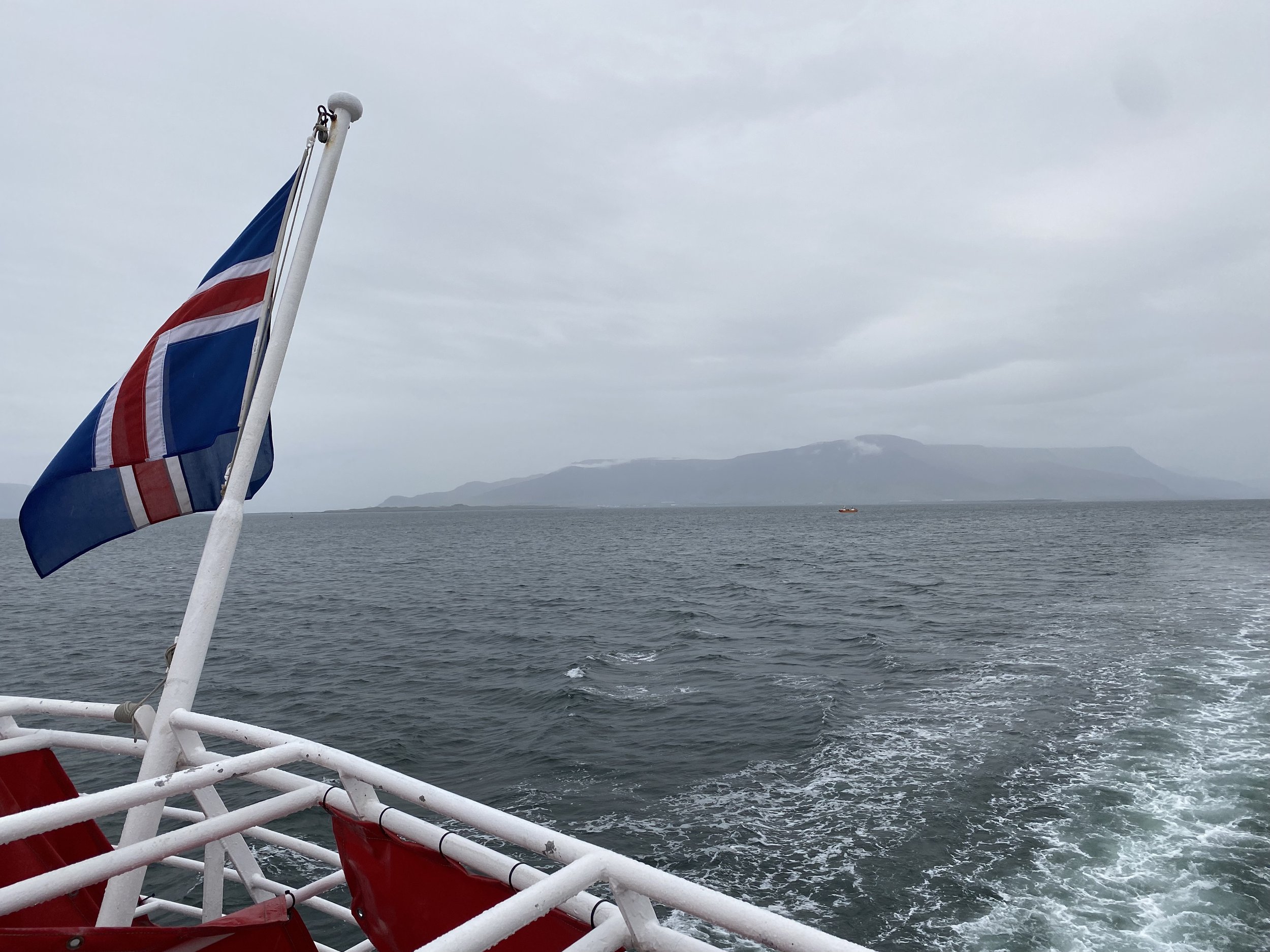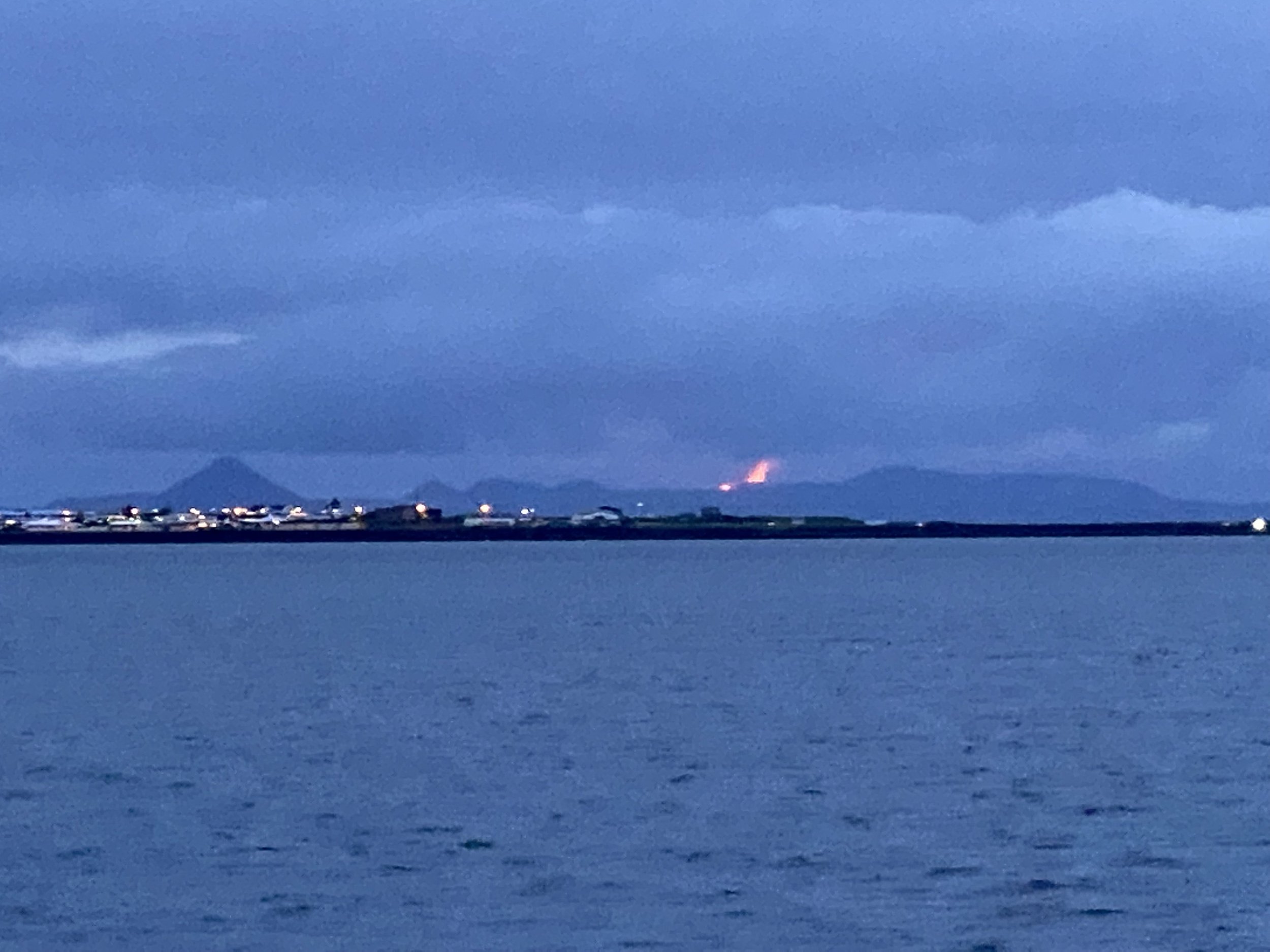Iceland - the Land of Fire and Ice
So, I like to consider myself ahead of the curve when it comes to popular things. When I was a young BaconMedic, we were the first kids in the neighborhood to have a PC. Kids came from all over to try out this new game called Pong. Cable too. While everyone else was adjusting their rooftop antennas, I was watching the Chicago Cubs on WGN for no other reason than because I could. Walt Disney World as well. Back when there were only two hotels plus a campground, we stayed at both the Contemporary and the Polynesian. I like to feel as though I have an eye for the up and coming.
It should, then, come as no surprise when I started to become fascinated with far-away lands and one specific country stuck out: Iceland. Sure, it’s all the rage today because of White Walkers, Storm Troopers and some truly amazing scenery, but back in the late 80s it was nothing more than an island in the North Atlantic that was truly off the radar for most travelers. Let’s be frank for a minute as well: who really wants to go to a place called Iceland? I mean – ice? That’s cold and wintery. You may as well vacation on an iceberg. Technology wasn’t nearly where it is today, and most the images from Iceland were from text books – Geography text books specifically. As a major in Geography (yes, that’s a thing), I was exposed at a relatively early age to images of magnificent glaciers, active volcanos and incredible landscapes. I had Iceland added to my personal bucket list well before any White Walker showed up north of the Wall.
Despite my desire to travel to such an exotic location, life got in the way. A marriage, followed by a couple of BaconKids meant that Iceland would have to wait. Following in my parents footsteps, there was Disney to do and family to visit in Louisiana. As a young couple, the budget was also limited, which meant camping – and lots of it. As I got older and found myself with more disposable income, we added family cruises and all-inclusive resorts. Iceland remained on my future ‘to do’ list as I watched it becoming an increasingly popular vacation destination thanks in large part to social media and a certain television series on HBO.
Black Friday 2019: my opportunity finally came. I received an email from IcelandAir vacations advertising some amazing blowout deals, and for the low price of just under $600 per person, we were booked with round trip air, 5 nights hotel and two tours (Northern Lights and Southern Sights). I found myself more excited for a trip than I had ever been before, and with just 3 months to go, there was no time to waste.
Now it’s a well-known fact that the BaconMedic is a summer kind of guy, so the idea of traveling to Iceland in February may seem a little bit of a surprise to many, myself included. I had flown to Europe the year before via IcelandAir and of course made the standard plane change in Keflavic (IATA: KEF) and my first impression was not great, at least for June. It was cold – 40 degrees – and a freezing mist. Had I been wrong all this time? Or was the seat back entertainment, showing highlights of this beautiful country, more accurate?
My vision of Iceland was backed up by the seat back video: beautiful fields of wild flowers, flocks of birds, amazing waterfalls, and stunning rugged beaches. A photographers dream trip for sure, but one that looked perfect during the summer months. As a renowned hater of winter, the only thing that would have drawn me to this island nation in February was the ability to see the Northern Lights. Would I be able to tolerate a week experiencing an Icelandic winter in exchange for the ability to see this amazing spectacle in person? In a word? Absolutely.
I mention all of this simply because of the conflict in my head: should I visit during the winter or the summer? For some odd reason, I felt the need to choose, when in fact I was forgetting one very important fact – I’m a grown up. I can do both. Iceland is an amazing nation, and to truly experience it in all its glory, one really needs to make two trips, which I managed to do. The first, in the winter of 2019, just before it was becoming apparent that covid was about to change the world (and travel) forever, and the second in August of 2021 as the delta variant was surging.
Iceland is a country that you really need to pre-plan. The only thing predictable about the weather is that it is completely unpredictable. Yes, it will be cold in the winter, and anything above 65 in the summer is a borderline heatwave, but the savvy traveler knows that both temperatures and precipitation can vary hourly and by location. Winds often whip up from the North Atlantic, bringing in cold temperatures, clouds and moisture. You can easily go from sunny to snowy in a matter of minutes, rain is a possibility every single day. When packing, its critical to keep this in mind and bring a good quality winter coat and hat, during the summer months a collection of sweaters and a heavy windbreaker are advisable. Gloves, comfortable boots and possibly even some ‘crampons’ are also advisable. Thick wool socks are a good idea, and you should bring more than you think you will need. But also, if you are going in the summer, you may have a day (or an hour) where just jeans and a tee shirt are the most comfortable. Finally, sun screen, sun glasses and a bathing suit, as Iceland is loaded with plenty of hot springs and public pools, heated from geothermal sources. In other words, you will probably end up bringing more than you would initially think. The best advice is to prepare for any type of weather, especially when leaving your hotel room for a full day tour that may involve hiking.
Once you arrive in Iceland, the question is what should you do? Keflavik International Airport is a relatively short flight from the United States; 5 hours from Boston which is an hour less than flying direct to Las Vegas. Like most transatlantic east bound flights, however, an overnight is almost always required and you often end up landing between 5 and 8am local time which leaves you tired and often unable to check into your hotel until early afternoon. My general advice to travelers headed via redeye to Europe is to essentially plan for day 1 to be a wash and select a hotel that offers early check in in order to get some rest, also many European airport hotels offer a room for a couple of hours in the morning, it’s worth the money to get your holiday off to a restful start. Of course, in the absence of the ability to do this, many visitors to Iceland stop off at the Blue Lagoon for some early morning rest and relaxation prior to check in; if this is your plan be sure to set it up well before arrival.
Of course, I tell you this because it’s what we didn’t do for either of our Icelandic adventures. Both times we arrived at the hotel hours before the scheduled check in; our winter trip involved us, our traveling party and about 20 other exhausted people stretched out on lobby chairs at the Hotel Cabin; our summer trip was better in that our room was ready early however our traveling companions weren’t so fortunate. Regardless, once settled, a nap was the top priority for both trips.
When planning a visit to Iceland, visitors will find a multitude of tours and activities. While time and budget are generally the deciding factors of what you choose, there are a couple of activities that should be on everyone’s ‘must do’ list. The Golden Circle, the South Coast and Reykjavik are virtually required in order to truly get a flavor of this amazing country. How you do it is certainly up to you, we chose guided tours for our two trips to the Golden Circle and South Coast, while both trips we chose to explore the city on our own, something surprisingly easy to do. Many travelers, however, choose to rent a car and with careful planning and a GPS, explore this island nation on their own.
Reykjavik:
The northern most capital city on Earth has rapidly become one of my favorite places on the planet. It’s easily walkable with plenty to see and do, but most important are the people. Most Icelanders speak fluent English, and they are all genuinely happy to have visitors in their shops and restaurants. They are an incredibly proud people and love to brag about their homeland and culture.
Unlike some of the massive European national capitals such as London and Paris, Reykjavik has a decidedly quaint feeling. The airport sits all alone about 45 minutes from the city, and the majority of the drive consists of wide open spaces that slowly evolve into a civilized community. You get the distinct feeling that you just entered a small city, noting that most the buildings aren’t much more than a couple of stories. Traffic is, for the most part, light and is conspicuously absent of horns and sirens.
You know you have entered the capital city when you see its most famous landmark, the large Lutheran church Hallgrímskirkja. Completed in 1986, this church is within walking distance of the main shopping and dining areas of Reykjavik and is absolutely worth the visit, there is no entrance fee, however to visit the observation tower there is a small fee; don’t let that deter you as the view of the city and surrounding landscape makes it worth every Icelandic Krona. An elevator will take you up to a main platform, however for optimal viewing, visitors will need to climb an additional single set of stairs.
When you are done visiting the church, it’s time for some exploration. Head straight out the front doors, past the statue of Leif Erickson (don’t forget to snap a picture) and start walking down Skolavordustigur Street where you will find a number of shops and galleries to pop into, there are also plenty of restaurants to choose from. Curious travelers may want to start with Kaffi Loki, directly across from Hallgrímskirkja, for a complete sampling of traditional Icelandic cuisine. Be warned though, some of the dishes are not for the faint of heart. For example, you might think that scoop of mashed potatoes is in fact mashed potatoes when its actually mashed fish (Plokkfiskur). Other items include smoked trout, herring, sheep head jelly, and trout tart. Of course, no Icelandic culinary experience would be complete without a taste of hákarl, also known as fermented shark, and it is available at Loki (complete with a souvenir Icelandic flag on a toothpick). While this may all sound scary, to fully appreciate the culture of any nation it’s imperative that you try the local cuisine. Of course, you can and should reward yourself with Rye Bread Ice Cream – yes that’s a thing, and yes you need to try it.
I certainly will be the first to acknowledge that the menu at Keffi Loki isn’t for everyone, just the thought of trying hákarl again is leaving me a little queasy and I’m not ashamed to admit that. I’m in good company, though, as my culinary idol, the late Anthony Bourdain felt the same way when he proclaimed ‘This is probably the single worst thing I’ve ever put in my mouth’ and used the term ‘unspeakably nasty’. The man had a way with words and was 100% spot on. Do I think you should try it? Of course I do, for no other reason than to say you did. Believe it or not, it is in fact considered a delicacy, and Andrew Zimmern actually enjoyed it once he got past the smell, calling it sweet and nutty.
For those I haven’t convinced – and honestly, I wouldn’t blame you if I hadn’t – there is a simpler and equally famous Icelandic dish only a short 10-minute walk from Loki: the world-famous Icelandic hot dog at Bæjarins Beztu Pylsur. Icelanders love their hot dogs, and this small, unassuming shack downtown is the best that Iceland has to offer. Served on a perfect squishy bun, this hot dog is made from locally raised lamb and beef and is then topped with raw onions, crunchy onions (think French’s and the top of green bean casserole) and the Icelandic take on three condiments: a sweet brown mustard called pylsusinnep, white remoulade (made from mayo, capers, mustard and herbs) and ketchup. Yes, ketchup. This isn’t the sweet, overpowering American variety, Icelandic ketchup is much more subtle (read: adult) and works perfectly with all the other toppings. Just look for the line of people waiting and you will find this gem, I make sure to order at least two.
For those looking for something not as exotic as Keffi Loki but not as simple as Bæjarins Beztu Pylsur, there are plenty of culinary options to explore. Those in love with seafood, trust me, you aren’t going to find any fresher seafood anywhere in the world than in the many restaurants of Reykjavik. Sægreifinn (aka Seabaron) is my personal favorite, located right on the water it reminds me of a New England style roadside seafood shack. While there are many options to choose from seafood wise, the Lobster stew is your absolute go to. Similar in flavor to lobster bisque, only with more chunks of New England’s favorite crustacean. Served with a crispy baguette and a cold Boli Premium Lager, you have reached heaven. Be warned, the place is tiny with just a couple of wooden picnic tables inside and out, so you may have to enjoy your meal outside. Minke whale, shrimp, scallops and assorted white fishes are also on the menu, I was pleasantly surprised with the whale as it tasted like a very tender and somewhat salty piece of steak.
The other Icelandic dish on the ‘must try’ list is Fish & Chips. This may come as a surprise as many travelers associate this simple but delicious dish with the United Kingdom, but considering the availability of fresh seafood in Iceland, the fact that they have absolutely mastered fried fish should come as no shock. The fish & chips wagon is a popular food truck located right on the harbor, meaning that your dinner was most definitely swimming in the icy cold Atlantic just hours before (be sure to check their social media account, as they occasionally head out to different cultural festivals). If a sit-down meal is more your style, there are plenty of options, the two that I was fortunate enough to enjoy were Bistro 101 and Reykjavik Fish, both within a short walk to the harbor and both delivering perfectly breaded and fried fish.
Aside from eating, Reykjavik has plenty to see and do. I would be remiss if I didn’t mention the Icelandic Phallological Museum, aka the Penis Museum. Yes, you read that right, no it’s not a sexual museum and yes, you will see displays dedicated to the penis. As odd as this sounds, consider this: there are displays of every species that has a penis, from the field mouse to the enormous (almost 6 foot) blue whale. Life is all relative, the human male self-esteem may either take a huge hit or receive a gigantic boost depending on which display you happen to be viewing at the moment, there are over 200 to check out. And before you ask, and I know you will, there is also a museum dedicated to the Vagina, only you will need to fly 1200 miles to the east to London. If endless displays of the penis isn’t your thing, consider checking out the National Museum of Iceland, the Reykjavik Maritime Museum or Harpa, the colored glass opera and concert hall.
Harpa at night. (photo courtesy of My Back to the Wind)
The Golden Circle:
Geography in action!
Of all the incredible sites Iceland has to offer, the Golden Circle is perhaps the most famous. While renting a car is a great option, there are multiple tours from large busses to private tours which will stop at all the popular sites, a guided tour assures you make the most of your time and don’t miss anything. Additionally, the local tour guide can be the difference from seeing the first Icelandic parliament where the North American and Eurasian plates meet versus just a bunch of rocks and fields (your first stop). Be sure to get a picture of yourself trying to hold the plates apart, it’s as important a photo opportunity as the one of you trying to hold up the Leaning Tower of Pisa.
Next up the Geysers. Nothing demonstrates the sheer power of mother nature than boiling hot water blasting from the earth’s core every couple of minutes. In between ‘eruptions’ be sure to take a peek at the small creeks running through the area, an oddity in the winter until you realize that the water temperatures are close to boiling as well. This is also a great time to consider a lunch break, as refreshment stops around the Circle are few and far between. There is a full-service restaurant at the Geysers, serving a variety of Icelandic and American dishes; this is also an opportunity to pick up a souvenir as well (don’t leave Iceland without an Icelandic wool sweater, in addition to being stylish they are also incredibly warm as you might find yourself overheating in February if you also have a jacket).
Iceland is well known for its stunning waterfalls, and your third stop includes Gullfoss. Quite honestly, this is perhaps the most beautiful and awe-inspiring waterfall I have seen and is the single site that confirmed the need to travel to Iceland both in the summer and the winter. Because of its sheer power, Gullfoss itself never freezes however the incredible views of the ice buildup around the falls during the winter provides for some truly incredible scenery; summer on the other hand allows you to see its full show, surrounded by native Icelandic vegetation. No matter what season you view it however, be warned, getting close means the possibility of getting very wet from spray.
The Golden Circle is a must see for all new visitors to Iceland; in fact, it’s worth the trip even if you have taken multiple trips. This is truly an opportunity for even the most jaded traveler to open their eyes and take in every single site. A cool looking river here, a serene lake over there, and look, there’s a herd of sheep grazing peacefully. While Iceland has so many amazing sites, if you had just one area to sample the best it has to offer, the Golden Circle should be first on your list.
South Coast:
Your next adventure should include a drive along the beautiful South Coast which will provide you with incredible views of black sand beaches, amazing cliffs, waterfalls and if you are lucky, Puffins and Mountain Goats. Plan on a full day to experience this drive in full. Must stops include three waterfalls all relatively close to each other (and a photographers dream): Seljalandsfoss, where (during the summer) you can hike behind the falls for some incredible pictures, Gljúfrabúi roughly ½ mile north and is truly hidden in the caves, and Skógafoss, about 15 minutes down the road and the tallest of the three. Next up is Mýrdalsjökull glacier, the source of the waterfalls. You can (and should) take a hike, however remember to dress accordingly including the use of ‘cramp ons’; a professional guide is strongly recommended for inexperienced hikers or for those going more than a short distance, after all, one needs to know how to avoid White Walkers.
The beautiful black sand beach of Reynisfjara isn’t far from the glacier either. No, you wont be laying out catching some rays and taking a dip, the temperature even in mid-summer is too chilly while the rip tides are incredibly dangerous. A camera, on the other hand, is required equipment as the scenery is as beautiful as any part of Iceland. Star Wars fans will of course immediately be transported to Lah'mu looking for the dastardly Director Krennic getting ready to land to force Galen Erso back onto the Death Star project.
About this time, you can travel to the small seaside village of Vik where a quick lunch and a bunch more post card quality photos can be had; take the time to appreciate just how peaceful a place this is. Situated along a dramatic coastline on one side of you and below stunning glacier topped mountains, this village is truly spectacular.
Other:
Once you get the Golden Circle and South Coast under your belt, it’s time to venture out to see everything else Iceland has to offer. Your options only end when it’s time to return to Keflavik for your flight home. The first on my list would be to venture not far to Geldingadalir, the volcano that began erupting less than an hour from Reykjavik. Options include hiking as far as the lava flows will allow, hopefully with a professional guide, or whipping out the plastic to charter a helicopter tour to view the eruption from above. While I had scheduled a hike to the eruption site, an unexpected hiccup caused me to reschedule this adventure for a future trip; as it turned out, I didn’t miss much as my travel companions reported the weather conditions were too cloudy for viewing; its best to research ahead of time what the forecast will be before venturing out. Oh, and the hiccup? Read about that here.
Iceland is full of incredible wildlife, both on and off shore, and every effort should be made to view them on their terms. Of course, unless you are Aquaman or one of his kinfolk, a whale watch tour out of Reykjavik is an amazing option. We chose an evening tour, departing at 6pm and returning just after a late sunset (roughly 930pm in mid-August). While we had no luck seeing whales or dolphins, we were treated to the most amazing spectacle – a view of the fully erupting Geldingadalir volcano, roughly 20 miles south of our vantage point on the boat. Fortunately, we have a coupon for a future sailing which is standard compensation for voyages that don’t encounter any whales.
Finally, the Northern Lights. We have all seen pictures, but experiencing this natural phenomenon in person is truly an incredible moment. While many might be dissuaded from Iceland in the winter, the best viewing of the lights are during the winter months as the sun sets in the late afternoon and rises mid-morning; the exact opposite is true in the summer with the sun often setting close to midnight and rising again just a few short hours later. Careful planning is critical, as even a light cloud cover will ruin your chances; bear in mind that one area may be cloudy while just a few short miles away it could be perfectly clear with the lights showing themselves in all their glory.
Two pieces of advice: a professional guide is your best resource as they know the current weather conditions in all the prime viewing areas, and schedule your trip early in the trip as many tour companies have similar guarantees as the whale watch companies – northern lights or a coupon for another trip, something impossible if you end up with weather the night before you fly home. One final note I found out the hard way: phone batteries drain quickly in many of the viewing areas, partially because you may be roaming (airplane mode yourself!) and partially because the extreme cold will drain the battery quickly. For traditionalists utilizing a regular camera, the same holds true about the cold, so bring plenty of spare batteries; you don’t want to miss out on snapping the next viral Instagram photo.
Tourist trap? Must do?
While it may be time to head home, there is one last thing to consider. Blue Lagoon: Must do or Tourist Trap? You’ve probably seen the photos of incredibly beautiful people sipping a drink and being romantic in this stunningly beautiful site and have wondered if this is worth visiting? Some things to know before you decide: first, its strategically located between the airport and Reykjavik so it’s an ideal stop in transit (Yes, they have luggage storage). For those arriving on an early flight but may have to wait until mid-afternoon to check in, this may be a perfect opportunity to unwind for a couple of hours, while those with a later flight home might find this to be a great way to kill a few hours rather than sit around in the hotel lobby or shopping for overpriced stuffed puffins at the airport.
Floating in the Blue Lagoon
The creators of the Lagoon (You didn’t think it was naturally occurring, did you? It’s the water from a nearby geothermal power plant) knew this, and built accordingly. Don’t let the fact that its man-made dissuade you though, the Blue Lagoon is in fact stunningly beautiful, and while a bit pricy and crowded, it’s still a fun and relaxing way to spend a couple of hours even for those with no airport trip. There is a swim up bar and basic admission includes one drink per person, and the wrist band provided to you allows for additional drink purchases (convenient, huh?). If all this relaxing gets you hungry there is an onsite restaurant, and you can certainly upgrade your admission to include treatments at the on-site spa. Yes, you can run up a good-sized bill, but remember, you are on holiday and only live once. For those on a budget and/or who want to avoid the ‘tourist trap’ that many feel the Blue Lagoon is, there are hundreds of hot springs and public pools which are in fact much cheaper with far fewer people.
Totally worth it!
Of course, I’m sure you are wondering – did the BaconMedic experience the Blue Lagoon? Yes! Our first trip in February after a full day enjoying the sites of the Golden Circle. Our driver warned us though – there was a lot of wind coming off the nearby mountain range. No biggie, right? Well, consider 40 mph gusts causing whitecaps. What was supposed to be a leisurely afternoon floating and relaxing turned into the most incredible, laugh filled time with our group. It wasn’t what we expected, but it was more fun than we could ever imagine, and that’s the best part of a holiday, isn’t it? The unexpected fun times with those you love. So, the question remains - should you go? That’s 100% up to you and what’s you enjoy, but more often than not I’ve heard people fall madly in love with the experience, and without a doubt, a float at the Lagoon will almost always be on our agenda for future trips.





